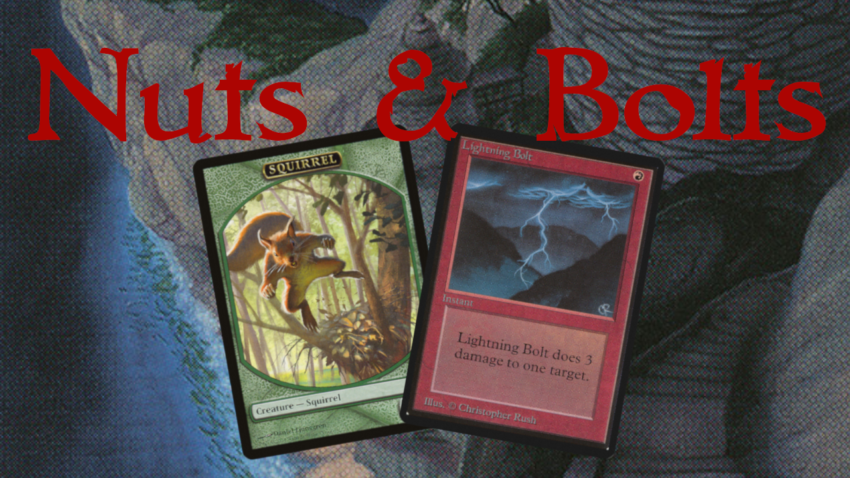Overview
Many Magic: the Gathering players’ first lesson in booster draft is learning the mnemonic aid B.R.E.A.D. (an acronym for drafting pick orders prioritizing Bombs, Removal, Evasive creatures, Any other playable, over Dumpy dud cards). This shortcut teaches new players that removal spells are a higher priority than everything except the most broken rares. I think that it was sound advice a few years back when premium removal spells like Lightning Bolt, Pacifism, and Doom Blade were printed at common, but over the last few years, Magic design and development teams have gradually turned down the power level of removal spells in standard legal sets, while simultaneously augmenting the power level of creatures. This evolution makes drafting current sets more interesting and difficult, because now each set has both good and bad removal spells, as well as spells that are situationally good or bad.
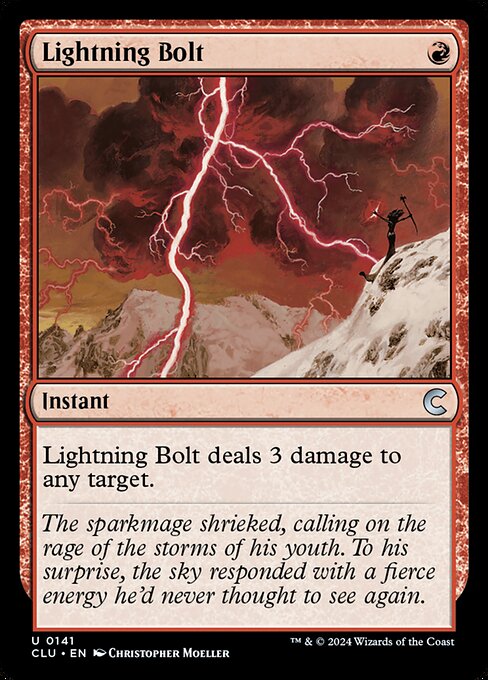
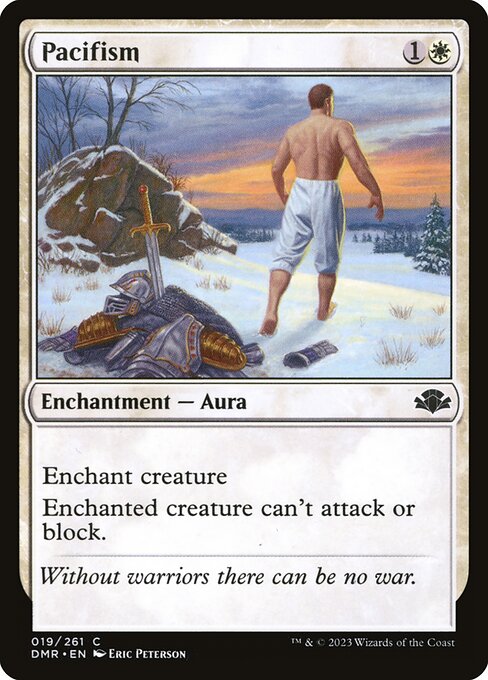
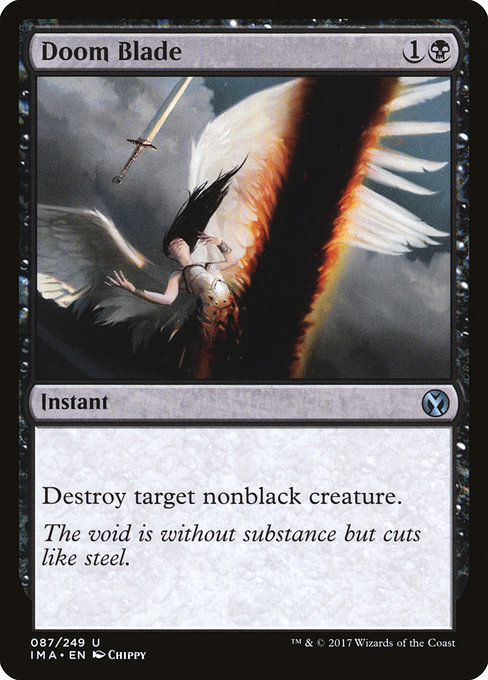
Now a drafter has to weigh the overall effectiveness of a card against its mana cost, and supplement early, high powered draft picks, with situational cards that compliment their deck’s strengths, shore up its weaknesses, and stay within its mana curve. Here we will review all the major categories of removal spells that you can expect to see in a current standard legal set, show variations that have been printed in the past, and discuss how to evaluate new cards that you will see in the future.
White Removal
Instant or Sorcery based Exile
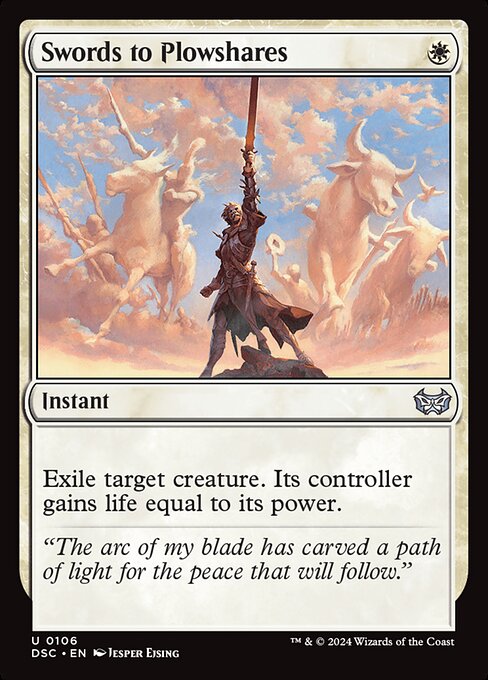
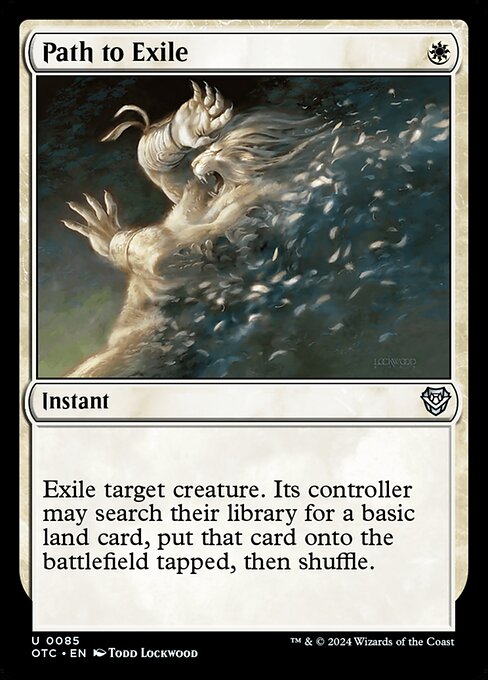
Why not start at the top? Swords to Plowshares is probably the best removal spell ever printed, and it’s effect is so powerful that even the severely downgraded version, Path to Exile, is a Modern format staple as the best white removal spell. Exiling a creature has several advantages over destroying one, such as preventing death triggers and thwarting graveyard strategies. You can also exile an indestructible creature or a creature with regeneration that would shrug off destruction. Instant and sorcery based exile is superior to enchantment based exile, because it is permanent and irreversible. Since it is a stronger effect, you will have to pay more mana for it. An instant speed, four mana, unconditional removal spell in this category would probably be too powerful to print at common, but I could see it printed at uncommon one day. A four mana sorcery speed version would also be very good, and one of the top commons in any set. What has been printed in the past are five mana versions at instant and sorcery speed, which are good cards, but not great. It is difficult for any five mana removal spell to be exceptional in limited, since it will typically trade down in mana with the creature that you are removing.
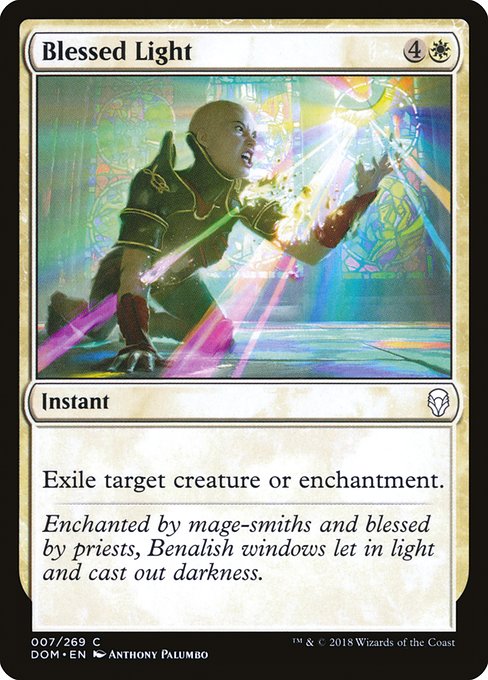
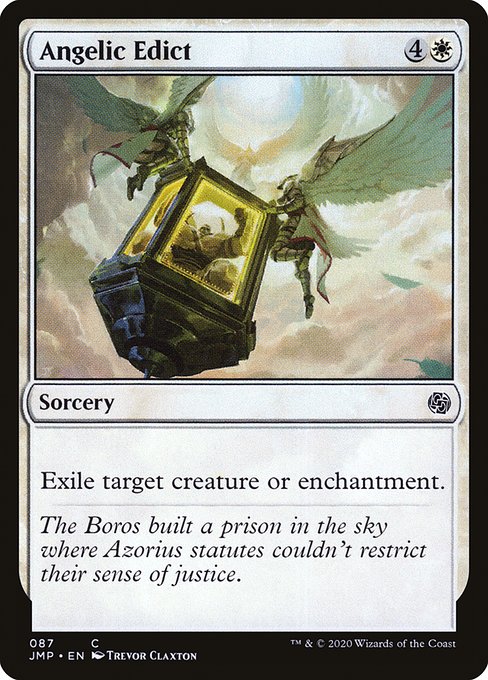
Other variations of this spell include cheaper versions that either come with an additional cost, give your opponent an additional resource, or put restrictions on the targets. It is impossible to grade these cards generally since the additional costs and effects could be anything, but don’t underestimate the value of removing the creature that is going to kill you. It is worth a very high price. Just realize that these cards have diminishing returns in multiples as the additional costs add up, and the valid targets grow scarce.
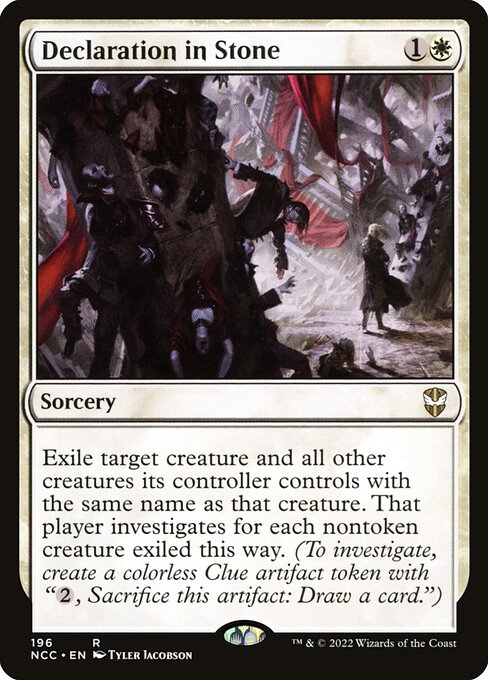
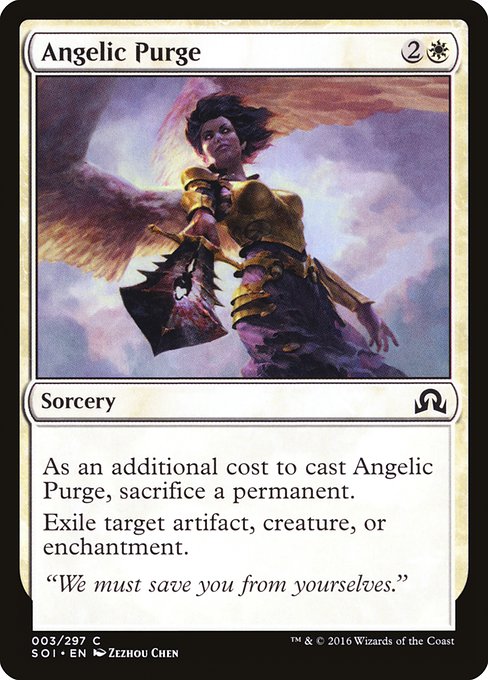
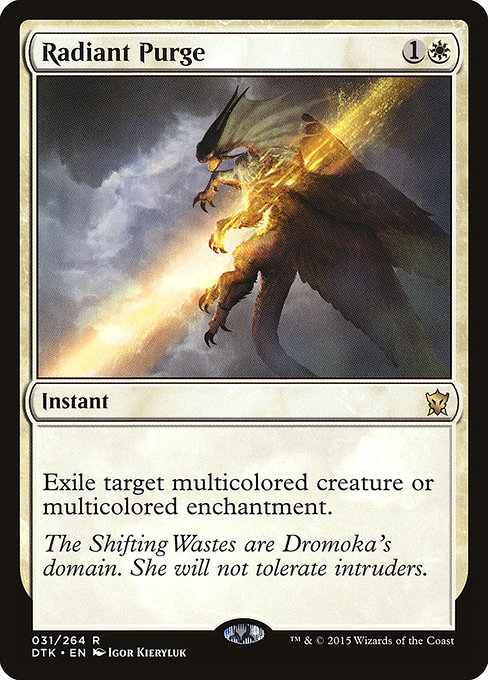
Aura based Removal

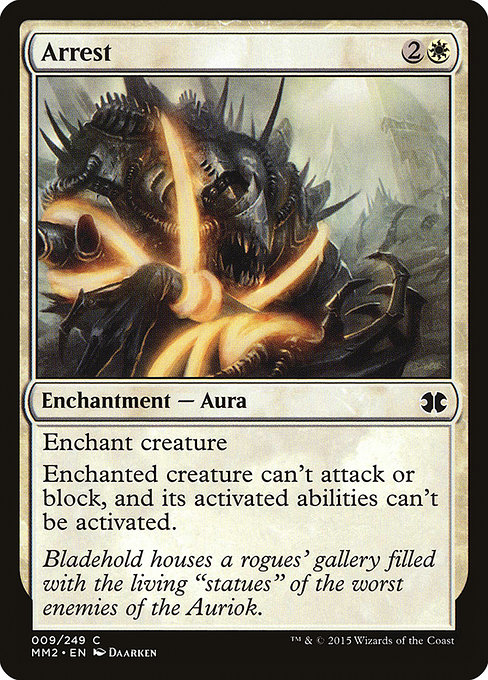
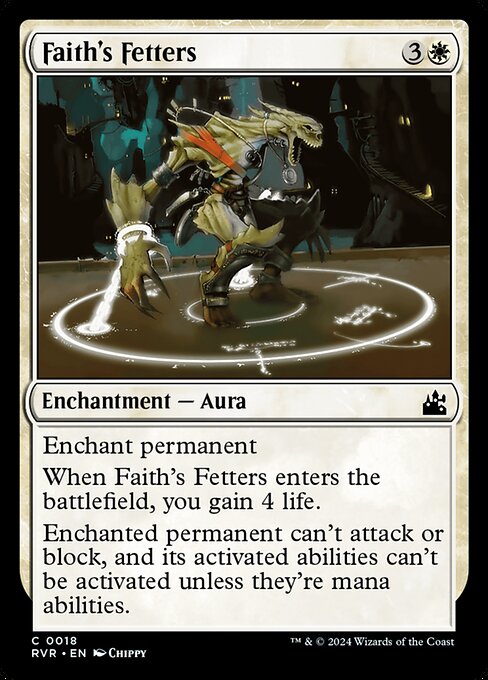
The most common form of white based removal are Pacifism effects, or auras that prevent the enchanted creature from attacking or blocking. While the original two mana version, Pacifism, is now relegated to master sets or supplemental products, the new default appears to be the three mana version, Luminous Bonds. Most sets will offer a three mana version of this effect with some upside or a two mana version with some downside. Either version is excellent and is probably the best white common in the set. This effect is still an above average playable at four mana assuming that the format isn’t exceptionally aggressive.
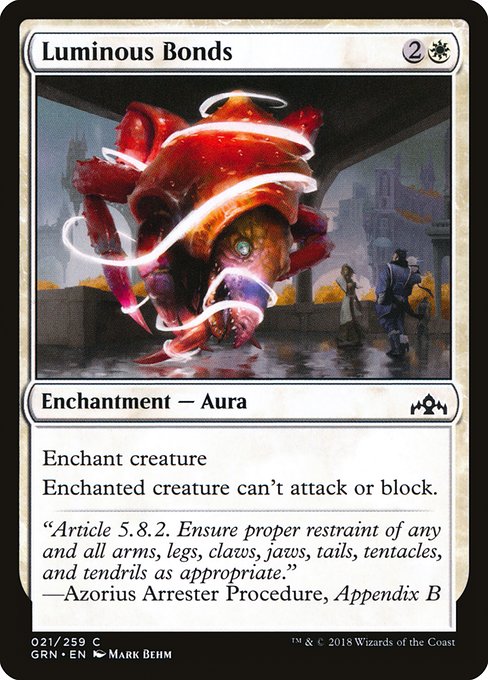
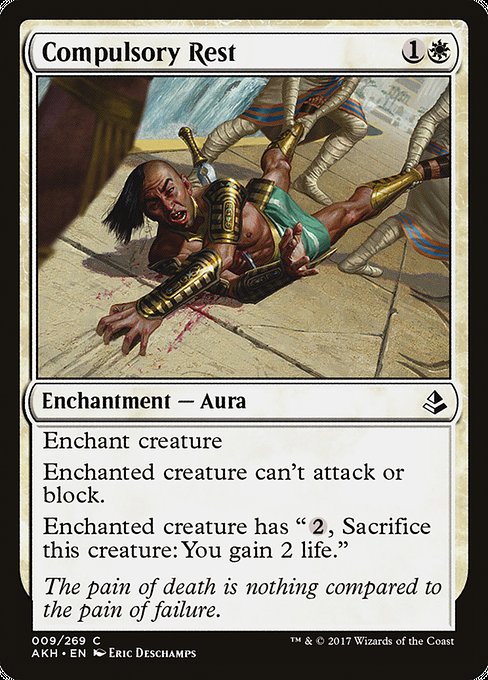
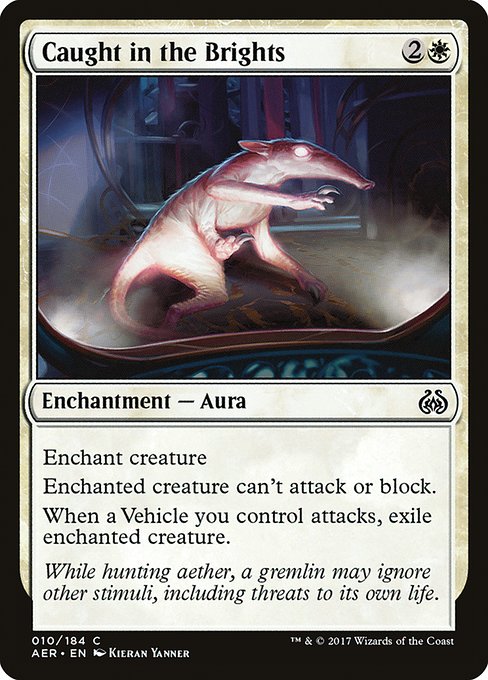
These spells are good because they consistently trade up in mana, removing four, five, or six-drops from combat. The downsides of these spells are that they can be destroyed by enchantment removal, blink, or bounce effects, occasionally at instant speed to ambush a careless attacker. In practice, most players do not main deck enchantment removal, and it is rare that you get ambushed by a creature this way. Just try to be aware of the mana they have available and the instant speed tricks that are in the format. It is easy to forget about a creature that has been pacified for four or five turns. Looking at it from the other side, it is generally not a good idea to bring in your own enchantment removal just because your opponent is playing some pacifisms. The risk of having a Naturalize rot in your hand, instead of having your own creature or removal spell to affect the board, is much worse than just having your creatures removed from the game on a one for one basis. Only bring it in if you know that you will have multiple targets, and if you really need to fight over specific creatures that you control.
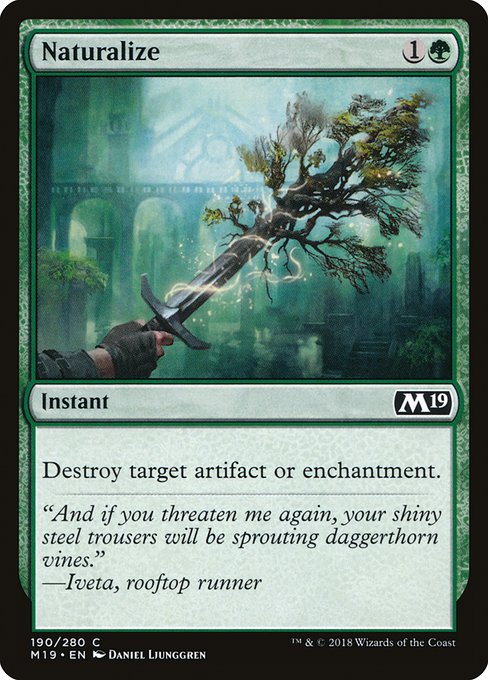
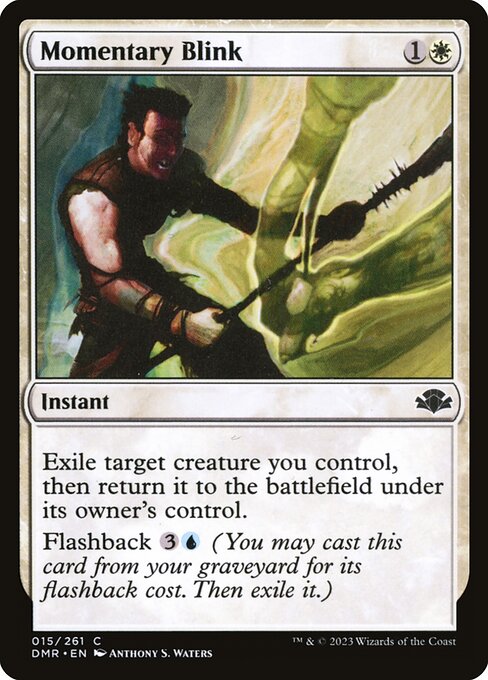
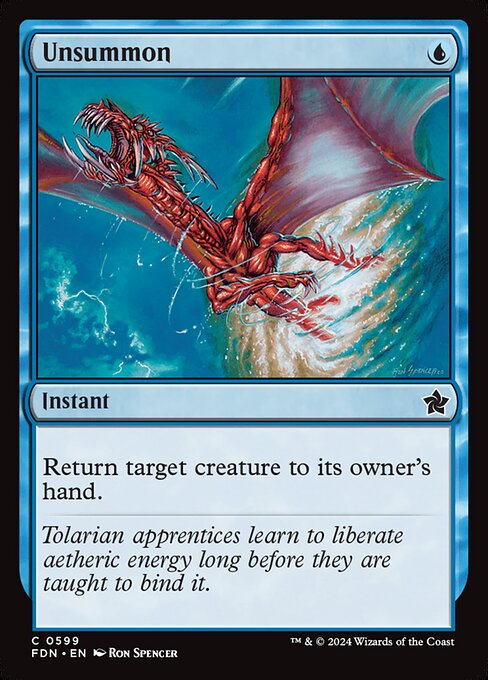
The other downside of aura based removal is that the creature remaining on the battlefield might still be gaining some value for your opponent. If the creature can activate an ability or has a beneficial passive ability they can still get value from it without attacking or blocking. Sometimes just having a creature can give them value to sacrifice it, either to an edict or as an additional cost to a spell or ability.
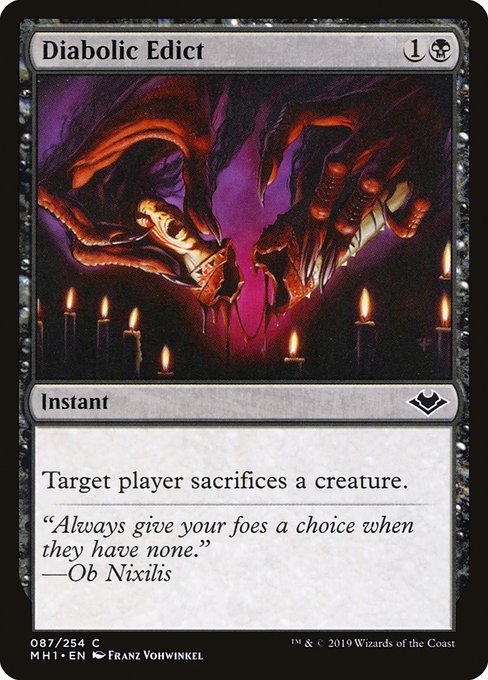
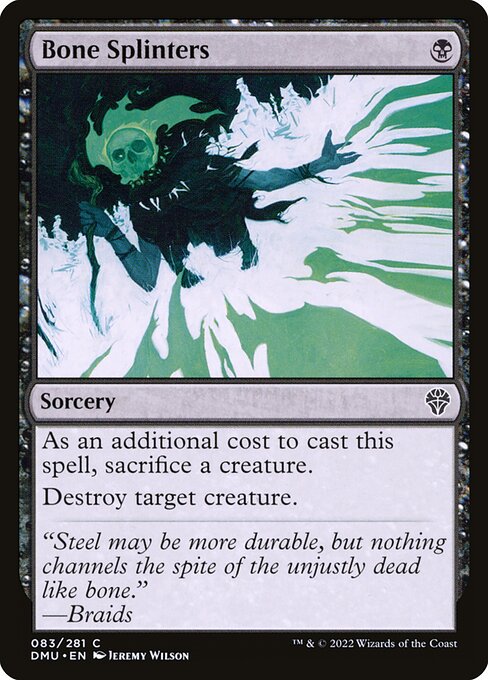
Despite these downsides, this type of removal is premium. It can take any creature out of combat, and that is simply the most important thing in most games of limited.
Enchantment or Creature based Exile
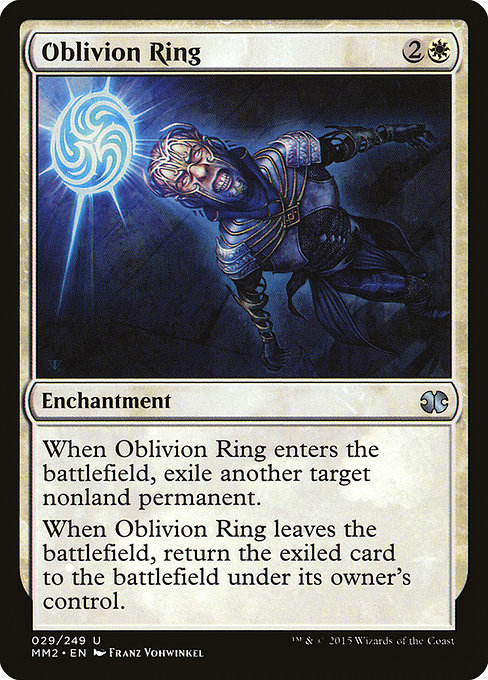
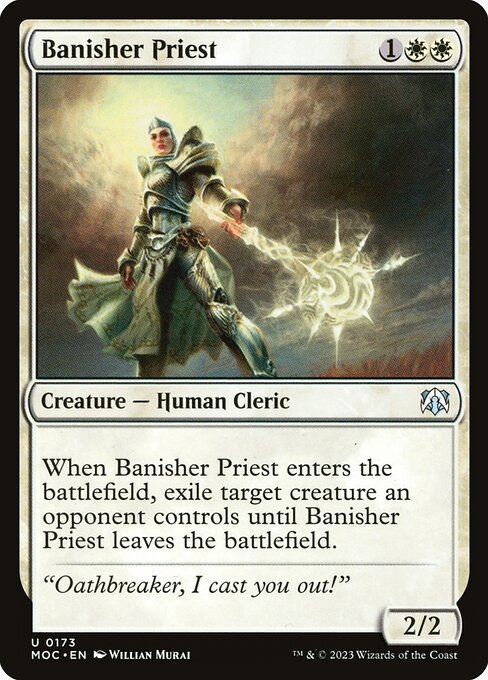
These spells enter the battlefield and remove another permanent from play as long as they remain on the battlefield. This type of removal is generally superior to aura based removal, having many of the same strengths and weaknesses. The biggest advantage over aura based removal is that the targeted creature is exiled, nullifying all of its abilities and removing the opportunity to blink or bounce it. The primary downside is that if your enchantment or creature is removed from the battlefield, then their creature will reenter the battlefield and retrigger any of its enter the battlefield abilities. Even so, enchantment removal is pretty rare, and you have control over which creatures you aim your removal at. For example, using an Oblivion Ring to remove a Thragtusk, is probably not the best solution.
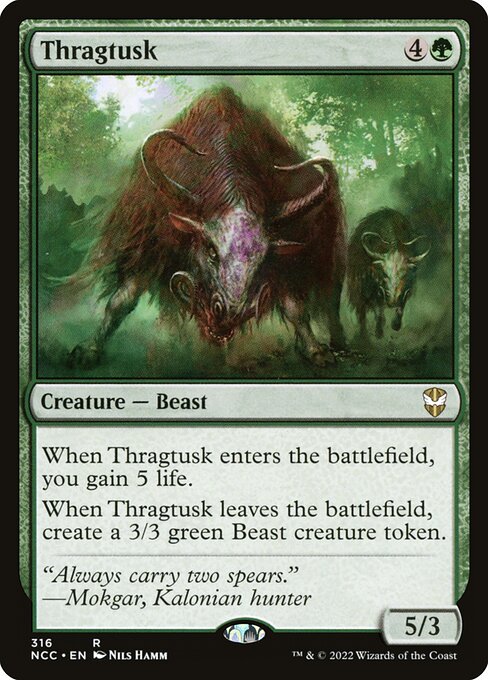
Most variations of these spells cost four mana if they can exile any nonland permanent, three mana to exile any creature, or two mana to exile a “small” creature restricted by its power, toughness or converted mana cost. All of these versions are excellent in limited. A two mana removal spell that can handle most two and three drops is still great.
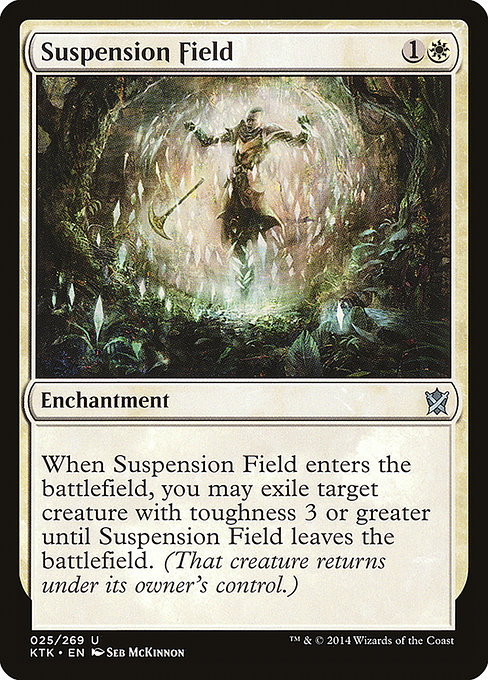
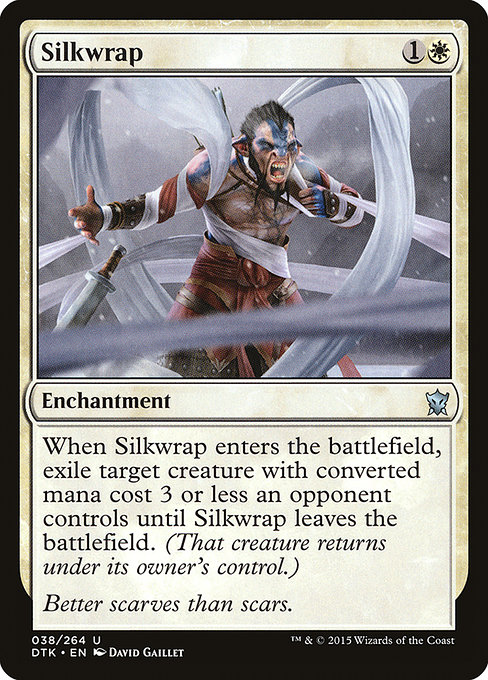
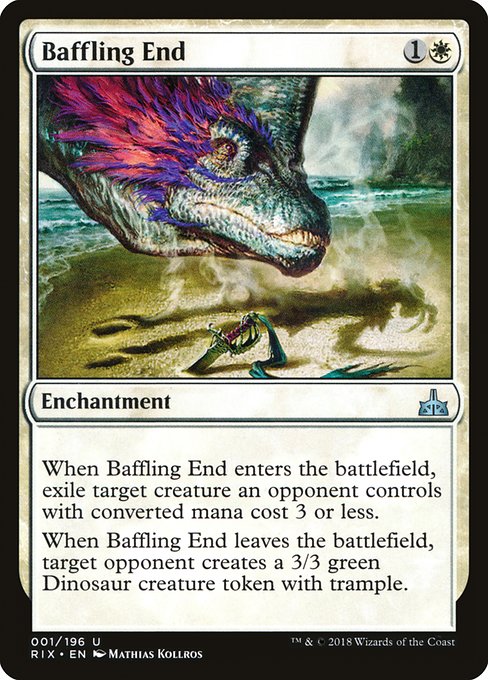
When this type of removal is attached to a creature, such as Banisher Priest, it changes significantly. Since your opponent is much more likely to have creature removal than enchantment removal, the odds are much higher that they will be able to eventually kill your creature and get their creature back. This makes the play more of an aggressive tempo oriented play than a permanent solution to the problem. Even so, it is usually a very strong tempo play. That is because your card is a two-for-one if it is not removed (it adds a creature to your board and removes one from theirs for only one card), and is a one-for-one if they can kill it (they use a removal spell on your creature and get theirs back). This is assuming that you play cautiously enough to not get “ambushed” in combat by them removing your creature at instant speed, after attacks are declared and before blocks. Typically these creatures cost three mana, and any three mana spell that can create a big tempo advantage for you and demand removal from your opponent is an excellent card.
Damage or Destroy an Attacking or Blocking Creature
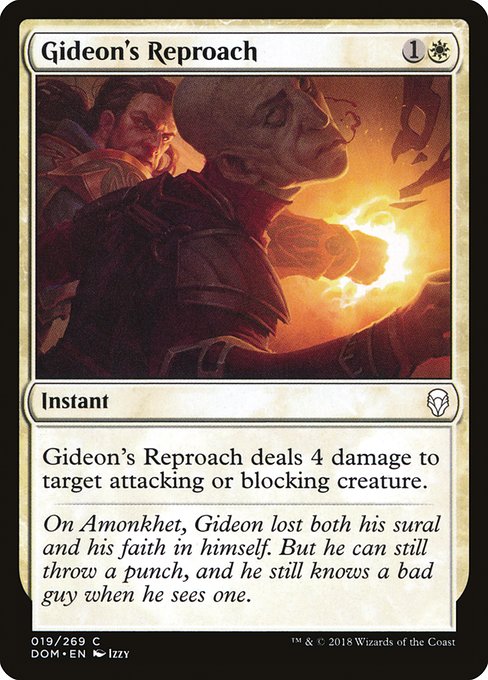
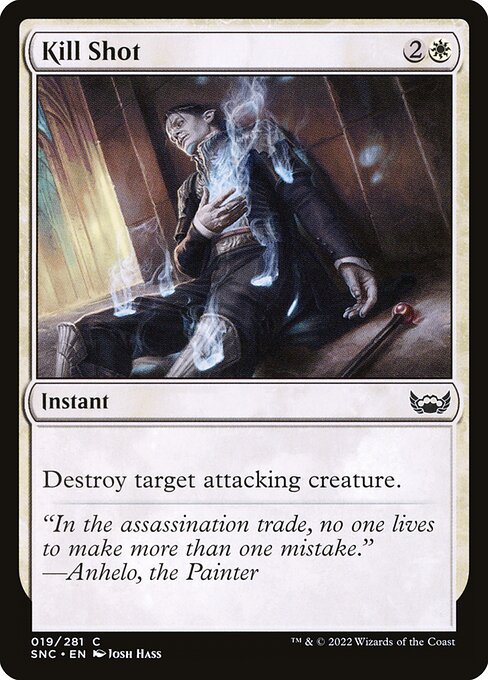
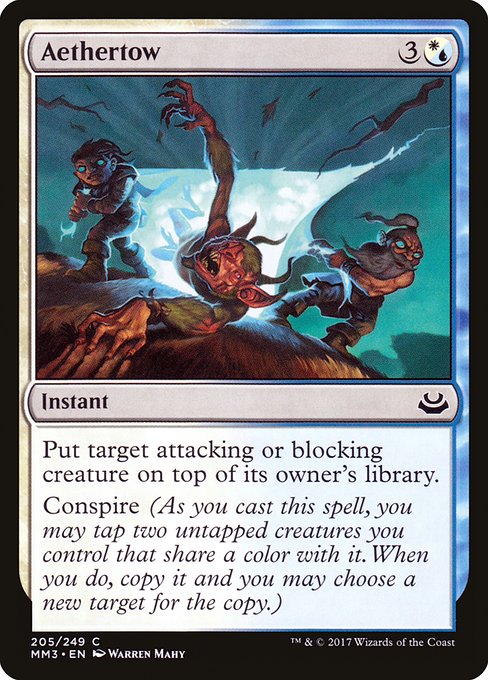
Thematically, white’s motto is “Don’t Tread on Me”. It won’t damage or destroy creatures that are minding their own business, but if you threaten it or any of its creatures, watch out. These effects are hit and miss in limited. Most are playable spells, but a solid step down from Pacifism or Oblivion Ring. That is because they are difficult to set up, and your opponent can play around them. Take a spell like Kill Shot for example. It requires you to take a turn off from casting spells, hold up three mana, and hope your opponent attacks. If your opponent figures out your intentions, they have the option of playing another creature and passing the turn. You might think this is ok since you didn’t take any damage that turn, but they are using their mana and developing their board while you are not, so you are actually falling behind. This type of card is basically unplayable in an aggressive or tempo based strategy, because in those games you actually don’t care if a creature is attacking you. Your whole plan is to attack them faster and more often, so your first 19 points of life are expendable. These cards are probably best in a controlling strategy where you have a strong late game, and plenty of options to use your mana at instant speed, such as counter spells, card draw, mana sinks and other instant speed removal.
A card like Gideon’s Reproach is a bit more flexible, since it can target blocking creatures and you can force your opponent to block by attacking them (often while they are tapped out of mana). The strength of these spells are their excellent rate. Gideon’s Reproach, for example, deals four damage for two mana, which is pretty good these days. The weakness of these spells is that your creature is still blocked and won’t deal damage that turn. This can really slow down an aggro deck and give the higher curve midrange or controlling deck the time it needs to stabilize the board. It still has the weaknesses of Kill Shot on defense, where your opponent can play around it, or have mana up for a combat trick or counter spell to save their creature.
Overall this category of removal tends to be replaceable and a step below most unconditional or damage based removal. It is still better than most combat tricks or filler creatures, but definitely worse than premium creatures.
Damage, Destroy, or Exile a Tapped Creature
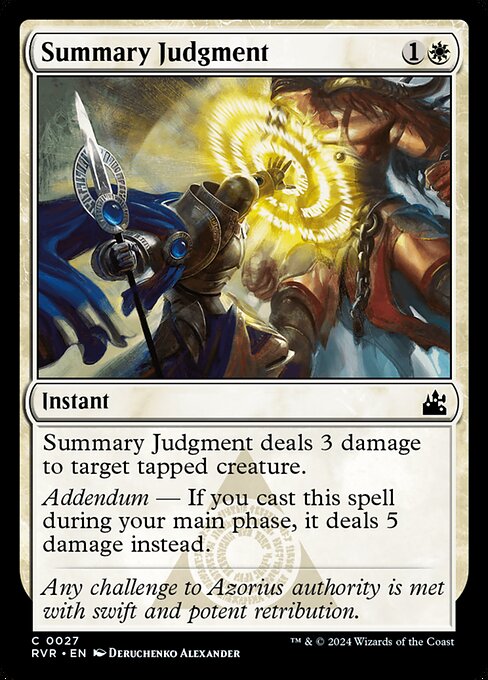
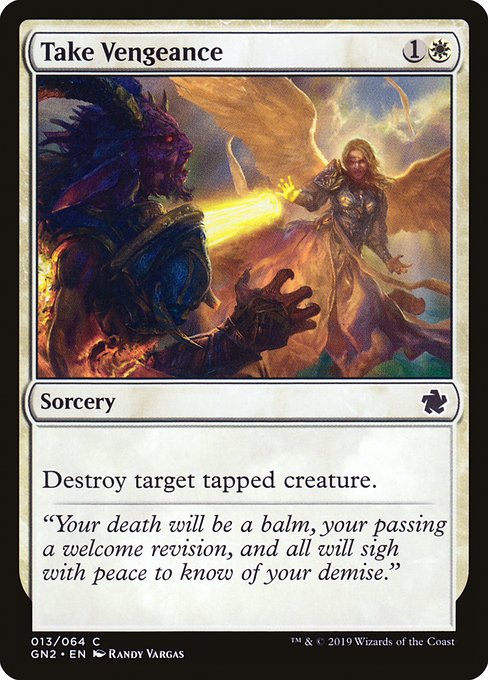
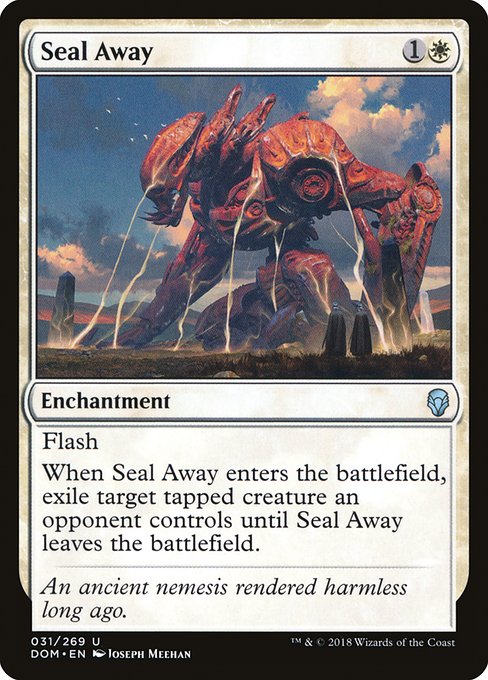
These spells vary in cost and effect. Generally the instant speed versions are good, and the sorcery speed versions are bad, because the instant speed spells can remove the creature before it hits you, while the sorcery speed versions often require you taking damage from the creature at least once. They are all weak against blockers and the occasional creature with vigilance. Therefore they are not good in aggressive decks, and are more effective in controlling decks.
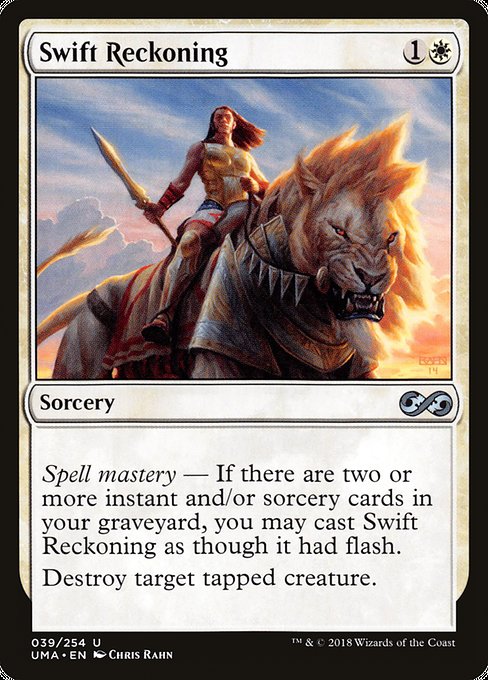
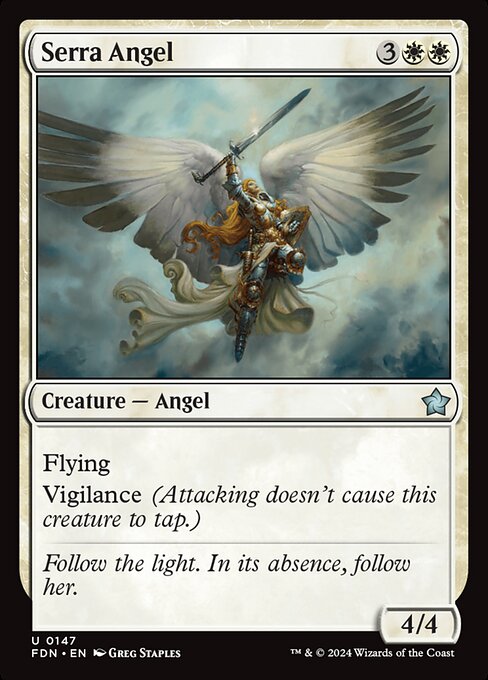
Destroy or Exile a “Big” Creature (with power or toughness 4 or greater)
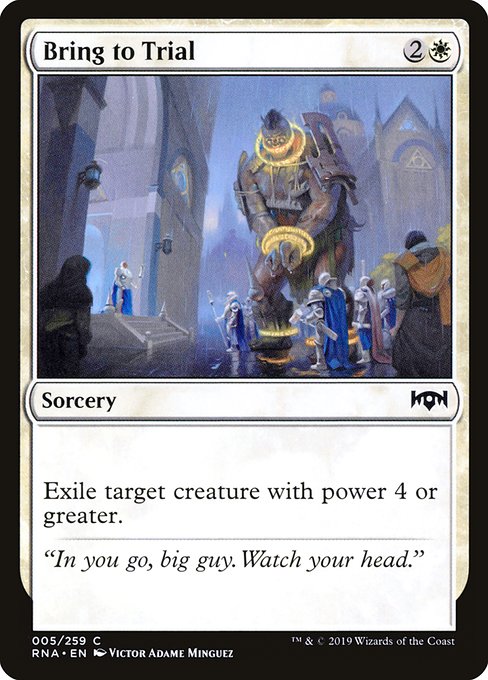
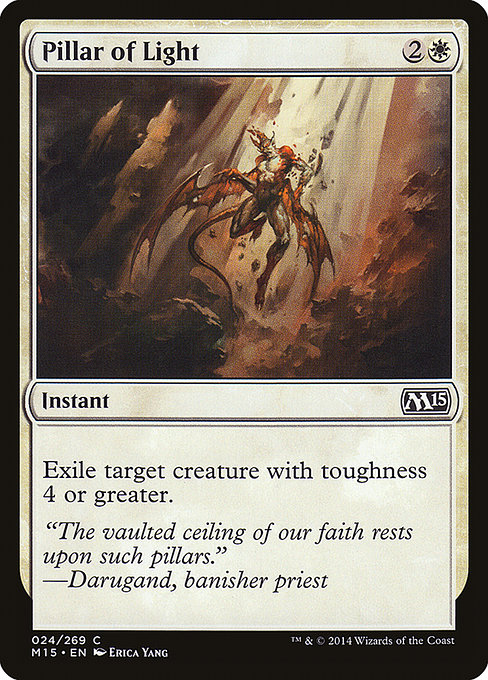
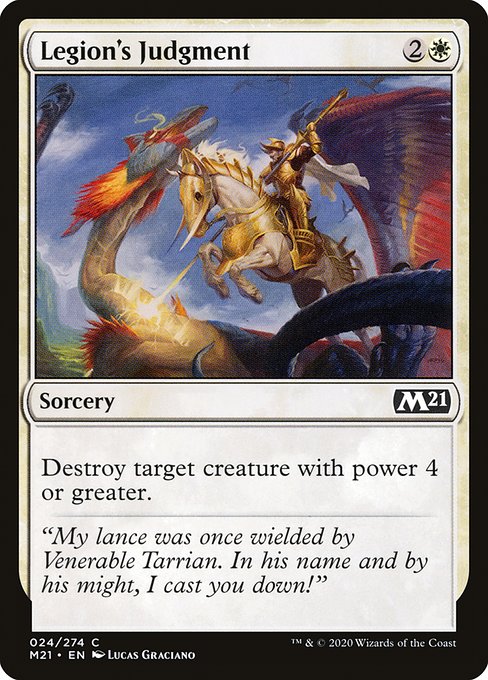
Since White is the color of small creatures and collective effort, it views anything too big as a threat. I generally consider this type of removal to be sideboard material. It does depend on the speed and creature size in the format you are playing, but an average deck in an average format will have four or five targets for this type of spell, which means that you might only see one or two targets in a game. For this reason I usually feel comfortable running one of these spells in my main deck, but almost never two. I don’t fully understand why removal that is so narrowly focused costs so much mana, but I don’t see much upside in these spells. Still, if you see plenty of targets from your opponent, bring in two or three from your sideboard. They are effective enough at what they do.
Tappers
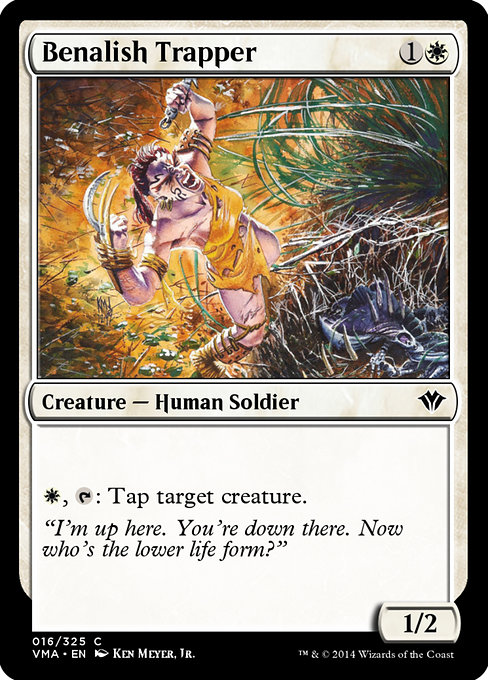
Tappers are creatures or artifacts that can tap a creature at instant speed. They are like removal spells with an upkeep cost, but also with a huge advantage. They can switch targets each turn to handle whatever the most dangerous threat is. They can also remove two blockers for a single turn by tapping down one creature on their turn and one on your turn. The key to evaluating them is the activation cost. A one mana tapper is playable on almost any body, the ability alone is worth the mana. A two mana tapper needs to be on a reasonable body for the mana cost. The ability is a little over costed, but if the creature is cheap or can interact at all on its own, it is still probably worth putting in your deck. A tapper that costs three to activate is not particularly useful unless its vanilla stats are good. Remember that putting an over-costed ability on a good creature doesn’t make that creature worse, it makes it better. An over-costed ability on a bad creature is just a bad creature.
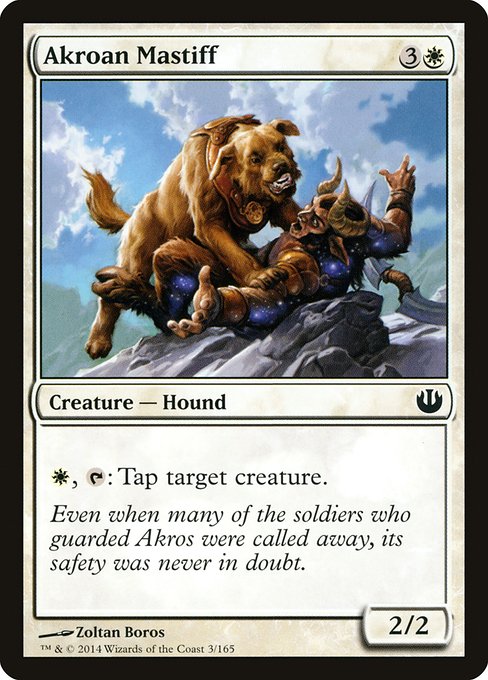
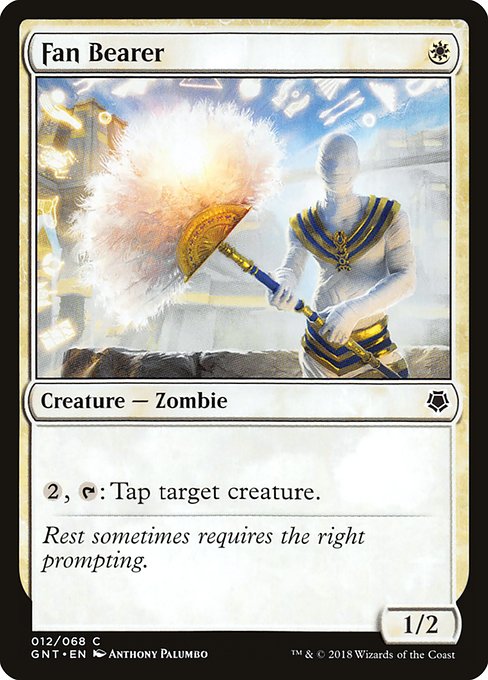
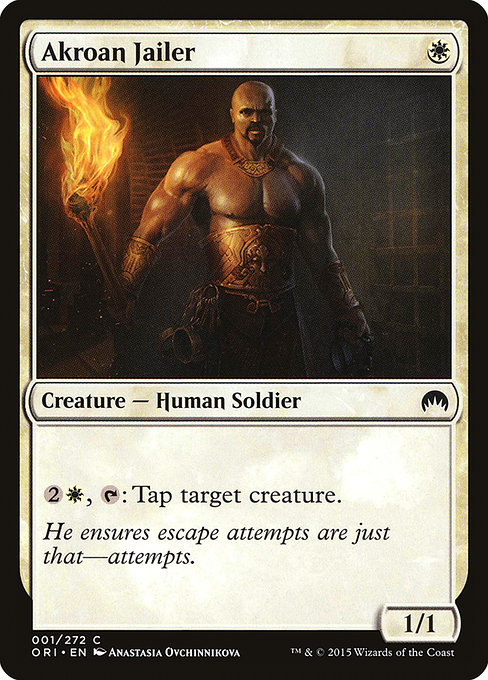
Creatures that can tap down multiple creatures a turn, like Azorious Guildmage and Eldrazi Displacer, are just bombs. First of all, these cards are already on par with their power and toughness alone, but once you hit six lands their abilities can remove four blockers from combat whenever you want (two on their turn, untap, two on your turn, attack with the team).
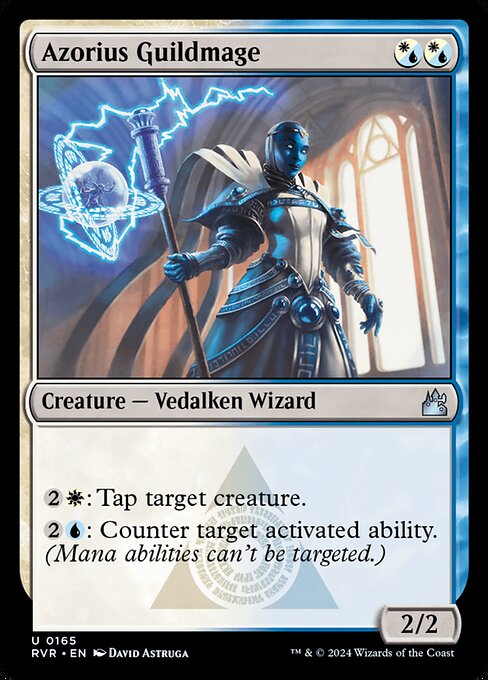
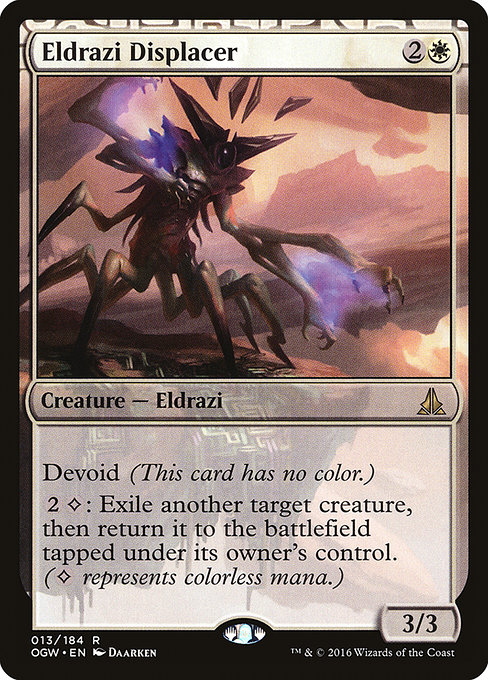
Creatures that tap a defending creature when they attack are excellent on offense, but subpar on defense. The ability is very strong, but make sure the creature’s vanilla stats are playable. They are one of your strongest cards in an aggressive deck, but below average in a control deck.
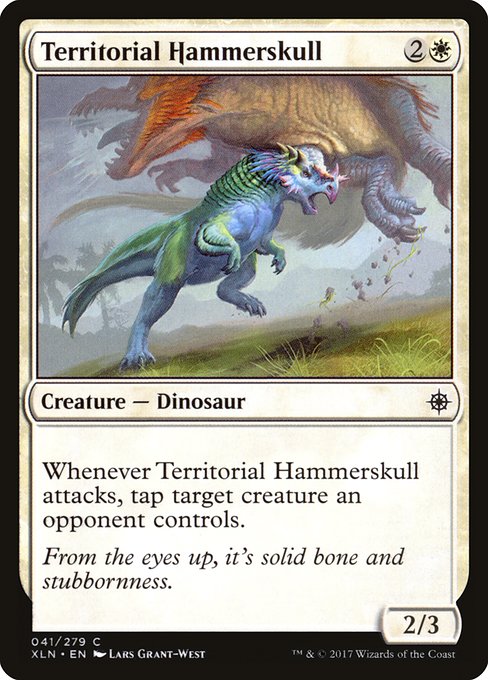
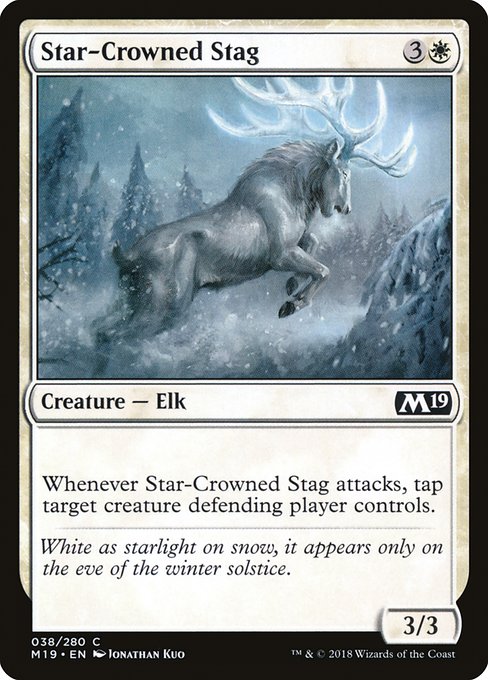
Blue Removal
Auras that Prevent Creatures from Untapping
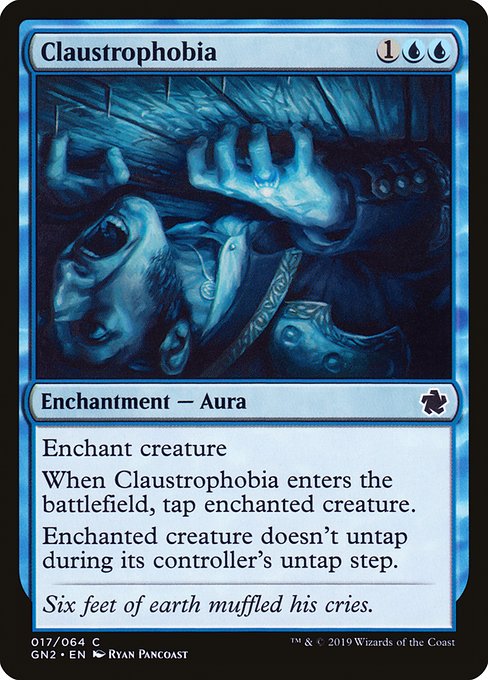
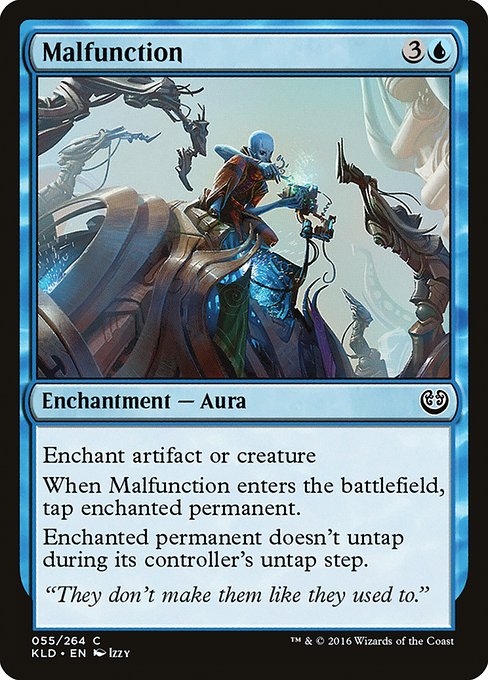
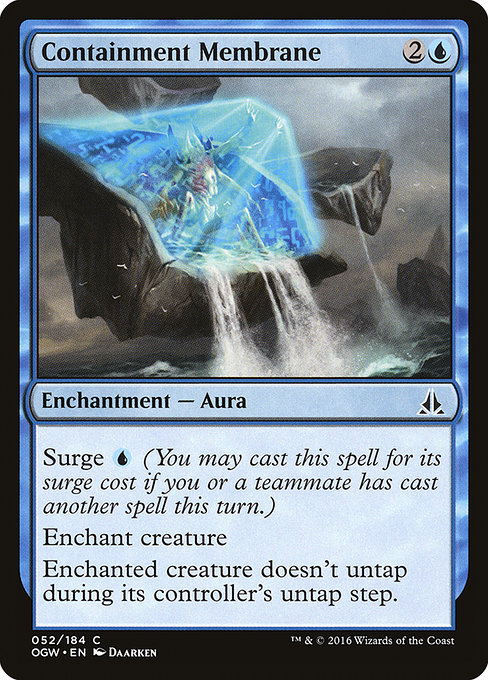
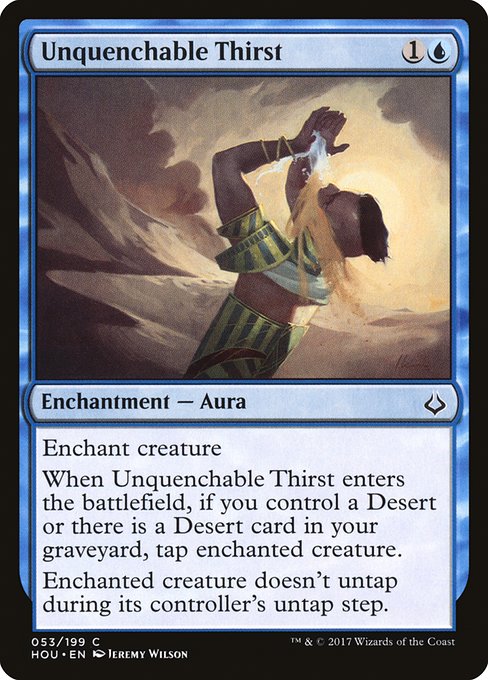
These are the blue equivalents of pacifism. They usually cost three or four mana and tap a creature on entering the battlefield. They have mostly the same strengths and weakness of the pacifism effects, as effects that untap your creatures are rare. Three mana versions are excellent and four mana versions are playable. Many of these auras don’t actually tap the creature when you cast them. These versions should be considered a lower tier of removal (similar to sorcery speed “Destroy Target Tapped Creature” spells in white, only with the additional drawbacks of enchantment based removal).
Auras that Reduce Power and/or Remove Flying or Grant Defender
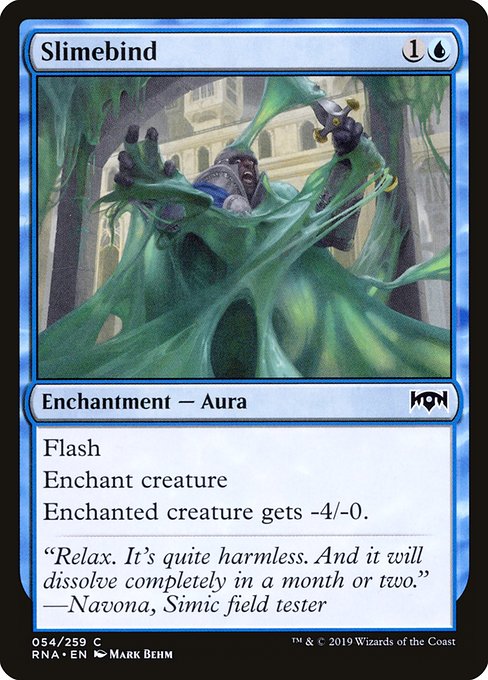
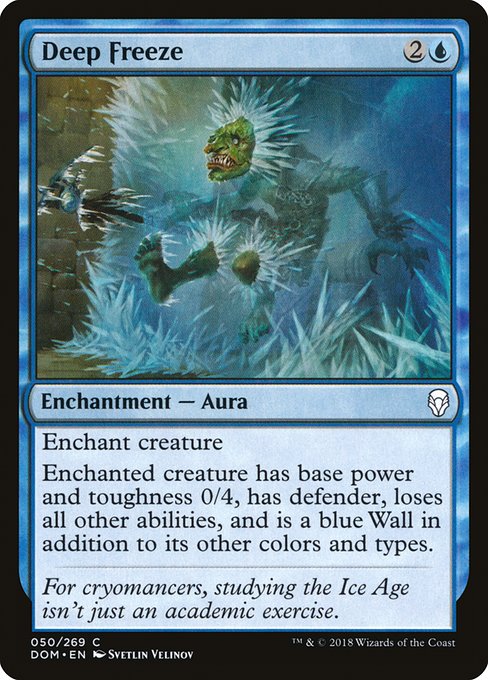
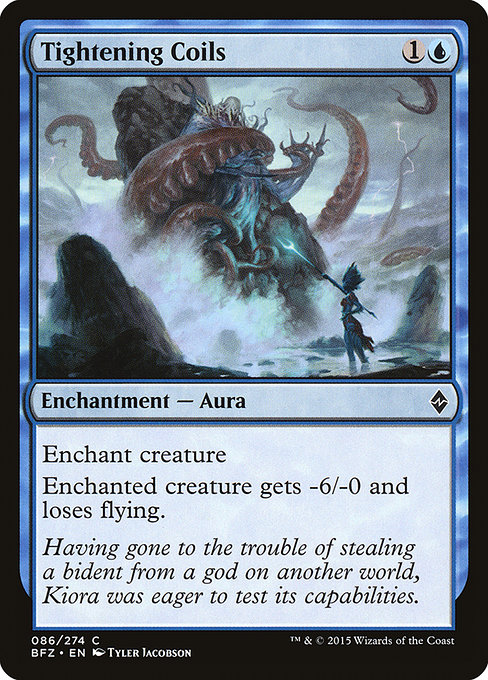
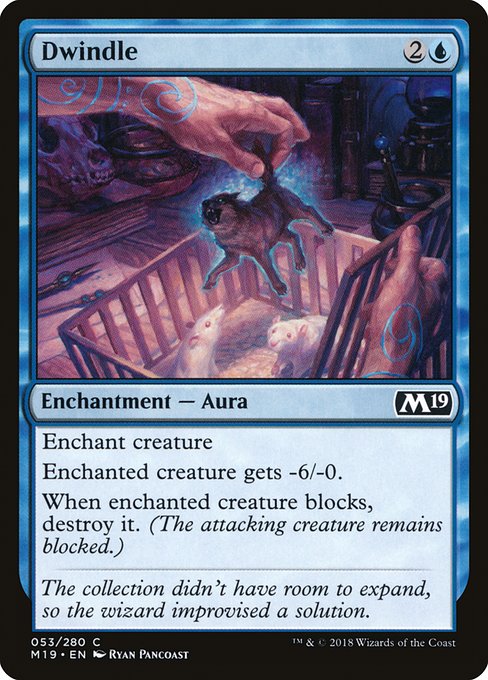
These auras are worse versions of Claustrophobia because they usually let the opponent block with the creatures. They are reasonable removal in control decks that don’t care about attacking the opponent until the late game, but they are not very good in an aggressive or tempo deck.
Bounce Spells

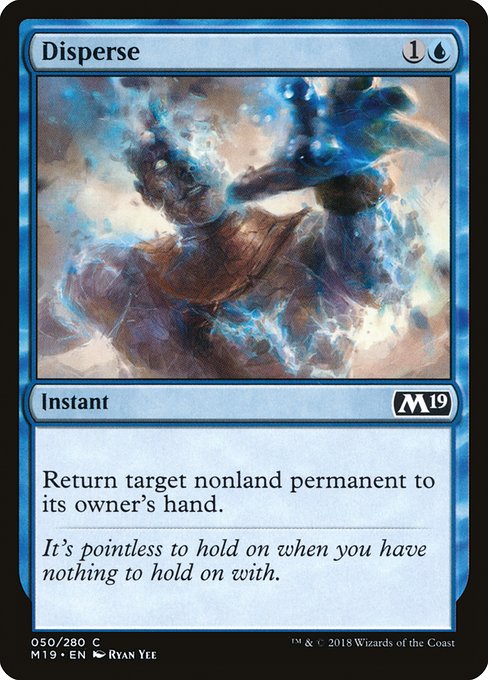
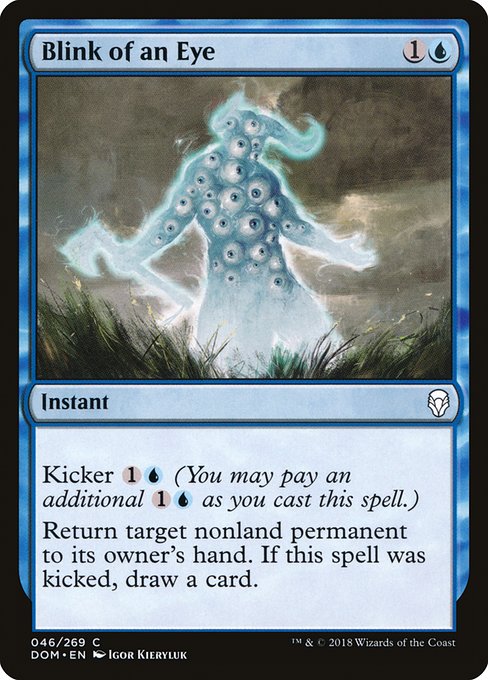
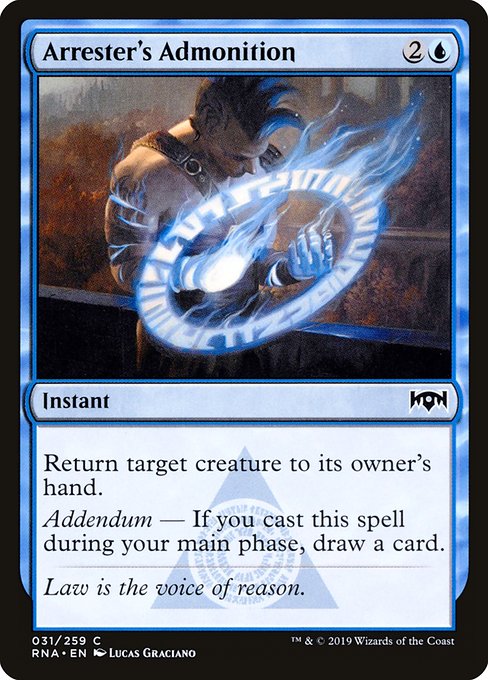
Bounce spells are instants that return a creature or permanent to its owner’s hand. These spells kind of break the norms of solid value based drafting. On their surface they are card disadvantage (you use a card to temporarily remove a creature, which they can recast on their next turn), but despite that, these cards are usually very good. They are the situational cards that are good in many situations. You can bounce a blocker to attack for lethal. You can bounce a creature in response to their combat trick. You can bounce your own creature to counter their removal spell or save your creature from their Pacifism or Claustrophobia. You can bounce your own creature to replay and retrigger its enter the battlefield effect. You can bounce a token creature to destroy it. One or two of these spells typically play well in any blue deck, and blue decks are the best at recouping from the card disadvantage. Only pay one or two mana for these spells unless they draw you an extra card when you play them.
Creatures that Bounce
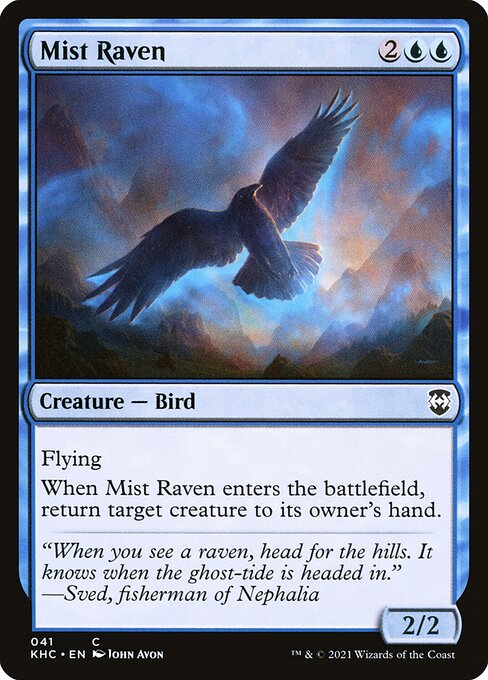
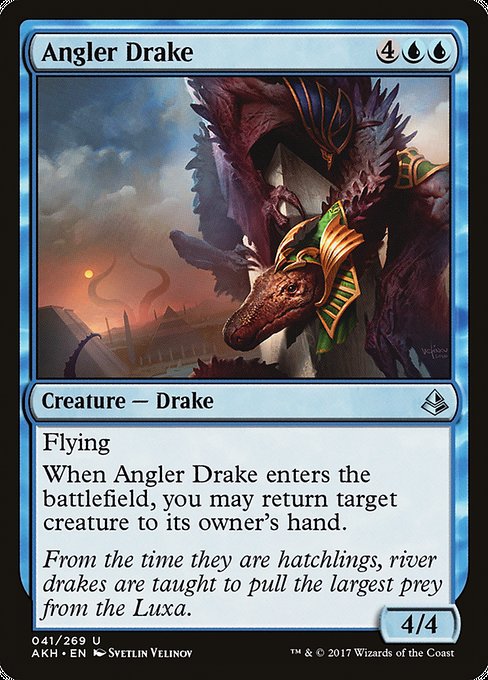
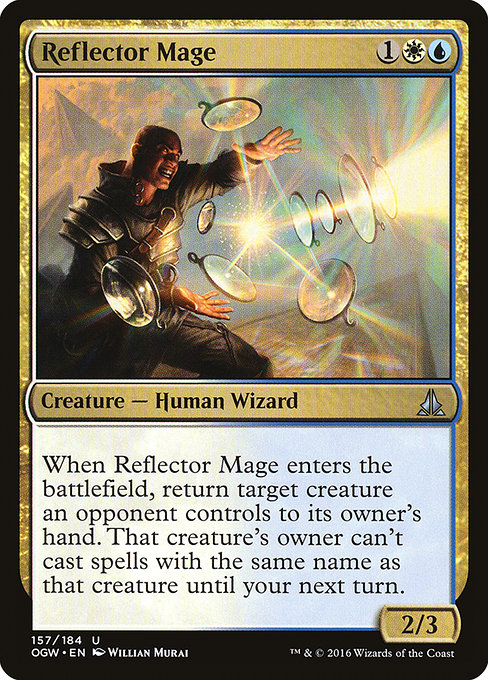
These creatures tend to be great in either aggressive or controlling decks. When evaluating them look at the mana cost compared to the creatures stats. If the bounce effect costs only one extra mana, the creature will be great. For example, a Wind Drake usually costs three mana and a Mist Raven costs four, or an Air Elemental costs five mana and an Angler Drake costs six. If the extra bounce effect costs two extra mana, the creature is over costed and probably a below average playable. On the other hand, a card like Reflector Mage can bounce an opponent’s creature for effectively zero extra mana, and not only was that card banned from Standard, it has made the cut in a top tier Modern deck (Humans).
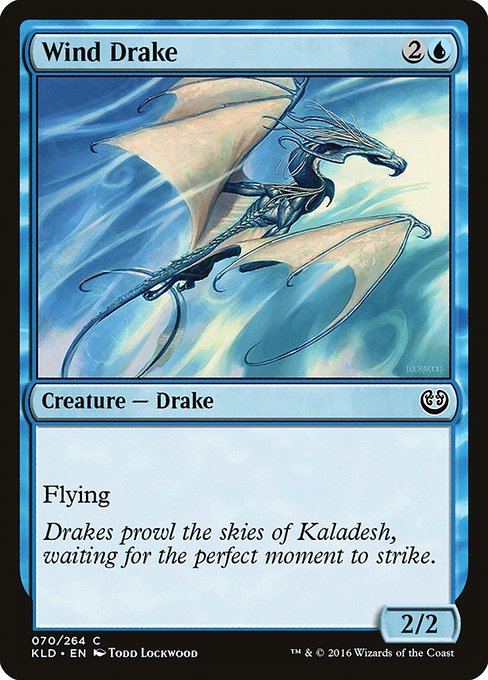
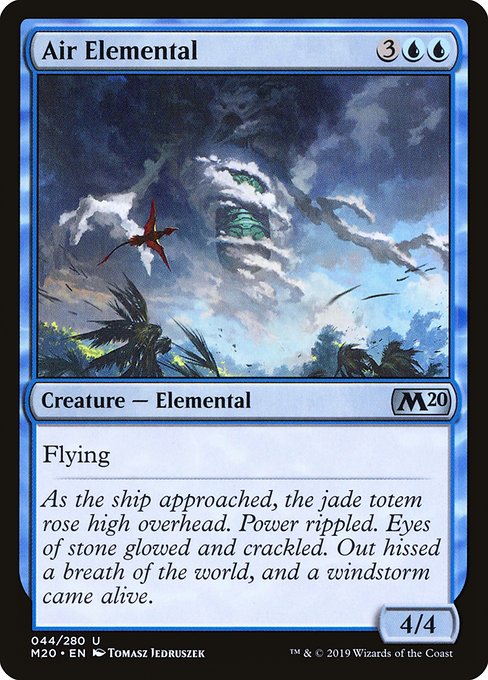
Spells that Put a Creature on Top of Library
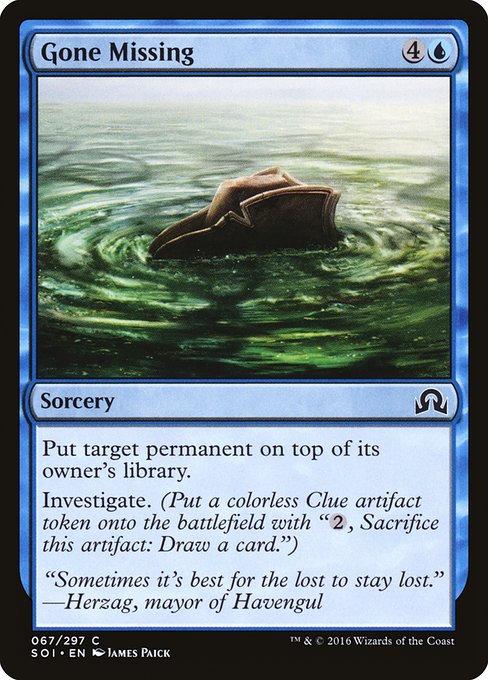
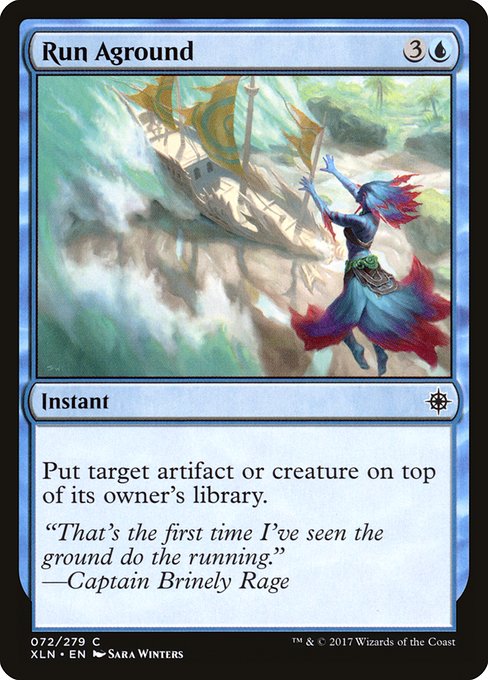
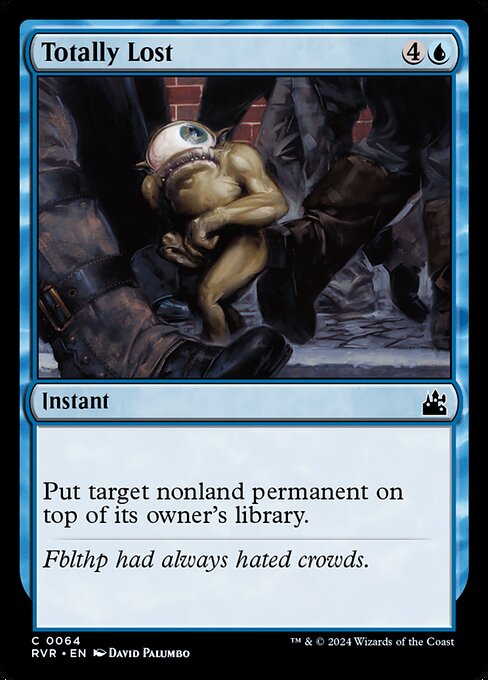
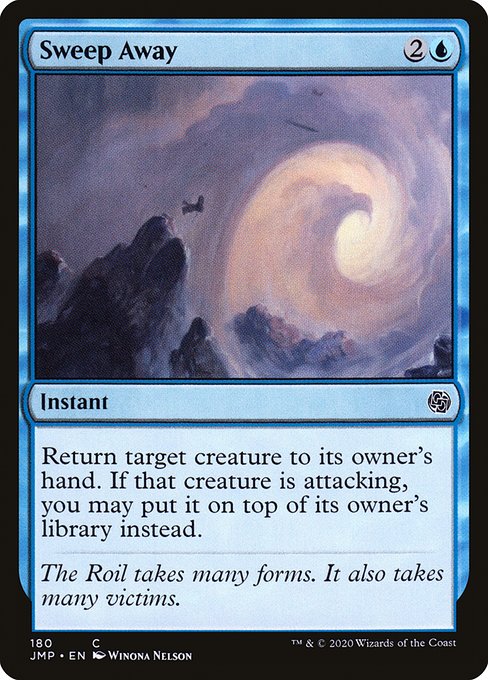
These spells are good or bad dependent on their mana cost. While they don’t have the built in card disadvantage of bounce spells, they are less flexible, cost more, and are generally worse. The three mana, Sweep Away is pretty good in a defensive deck, and Run Aground can be ok in an aggressive or controlling deck, but I avoid these spells at five mana or above. The cheaper versions can sometimes seriously set your opponents back when they are mana screwed, but you are unlikely to get this benefit when you spend five or six mana on the spell. While you are technically not at card disadvantage for putting their threat back on top of their library, you also haven’t accomplished much to progress the game in your favor. You set them up for a good draw step next turn, while you used up one of your deck’s spells and move closer to flooding out.
Control Magic
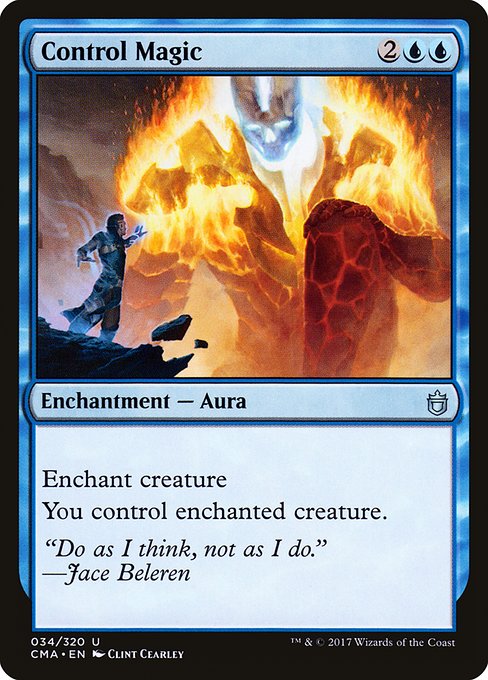
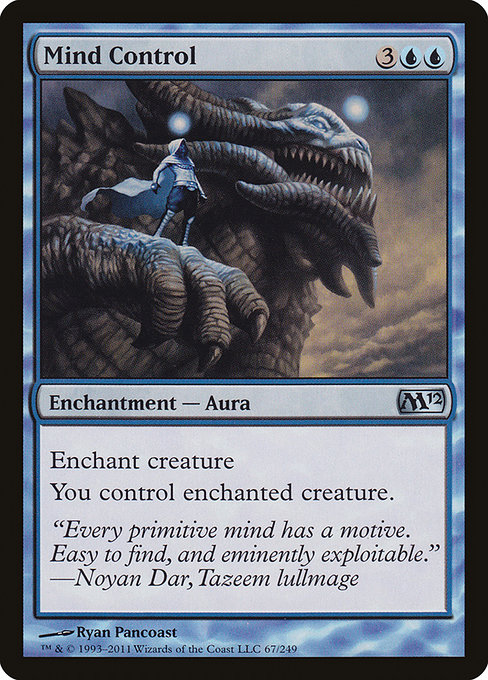
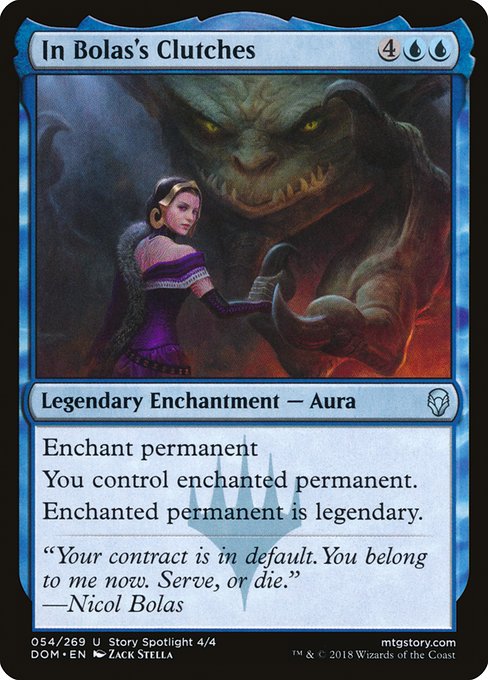
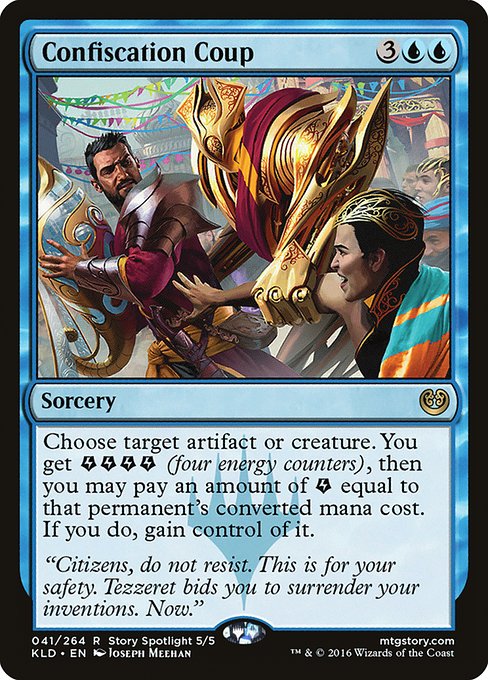
Gaining control of your opponent’s creatures is the best type of removal in limited, not just for blue, but in any color. It is a built in two-for-one as you remove their best creature and gain it on your side. While it is technically true that Sorcery based control is harder to remove than Aura based control, it really doesn’t matter. These spells are all first picks in any format.
Black Removal
Give Target Creature –x/-x
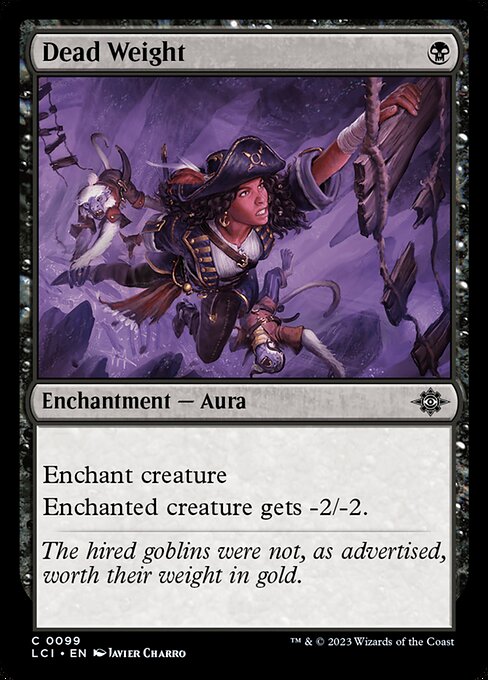
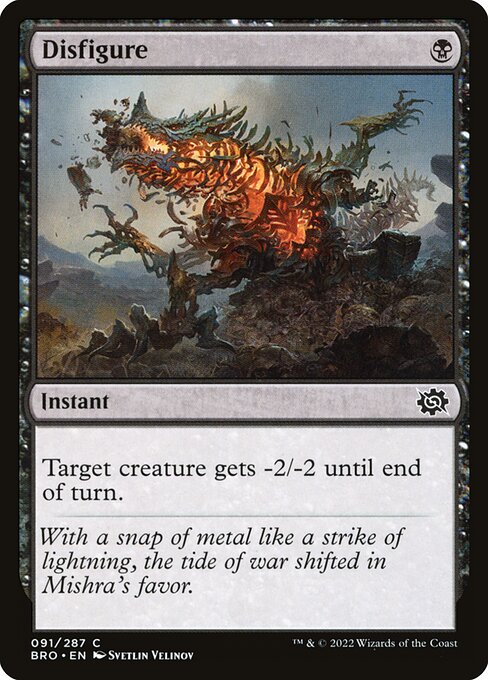
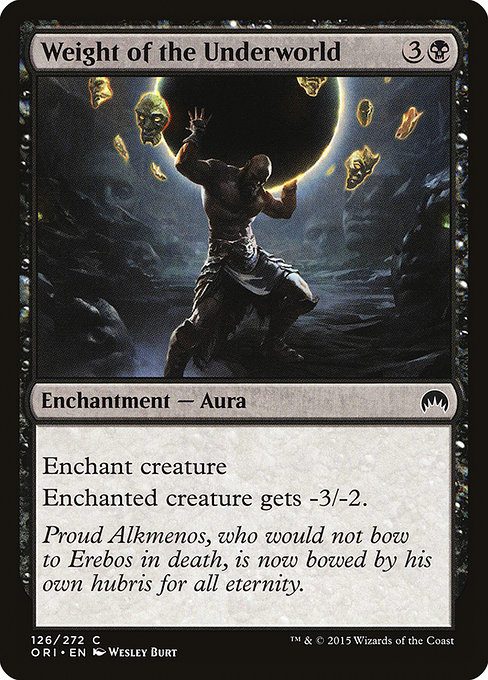
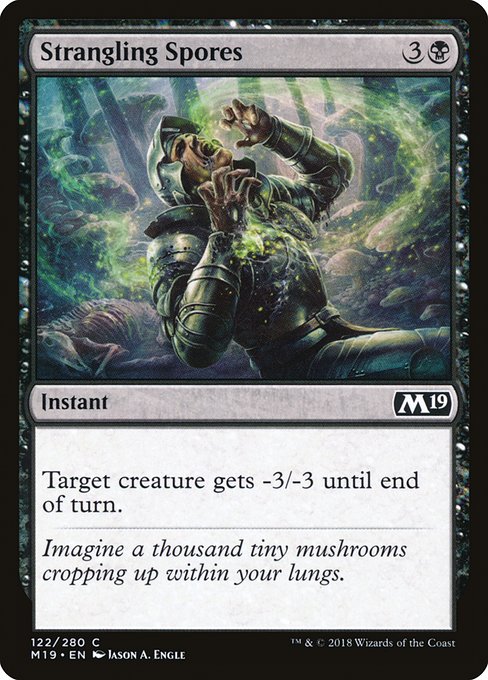
Any spell that can give –2 toughness for one or two mana is going to be great in any format. They are the best spells to keep black decks from losing to aggressive decks, and are a good replacement for two-drop creatures. Two or three mana spells that gives –3 toughness are also excellent, but four or five mana versions are replaceable and difficult to get a mana advantage out of them.
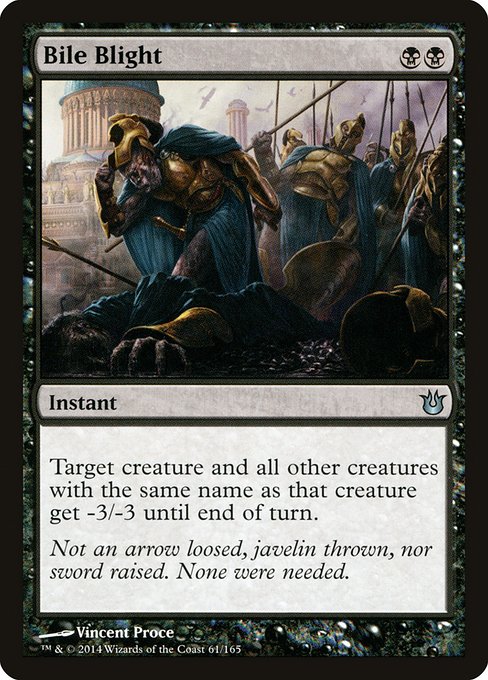
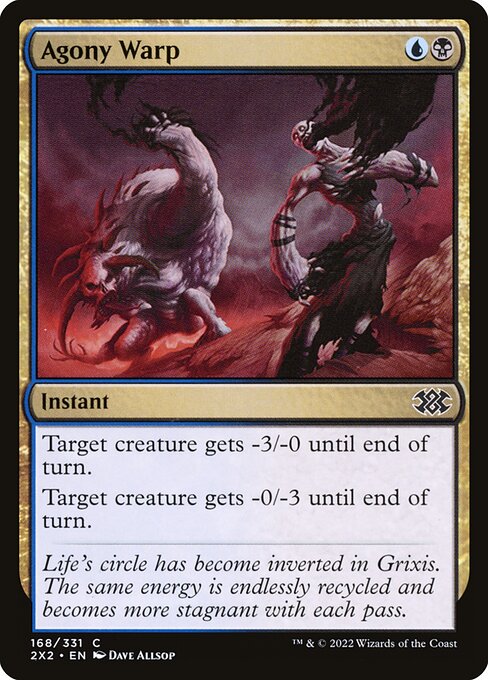
Destroy or Exile a Small Creature
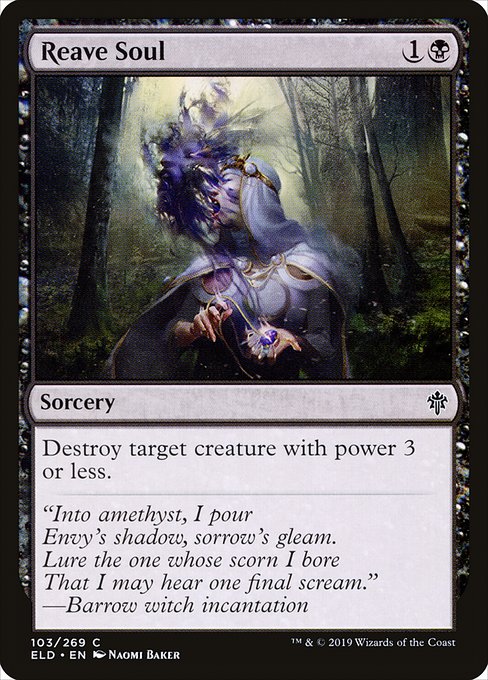
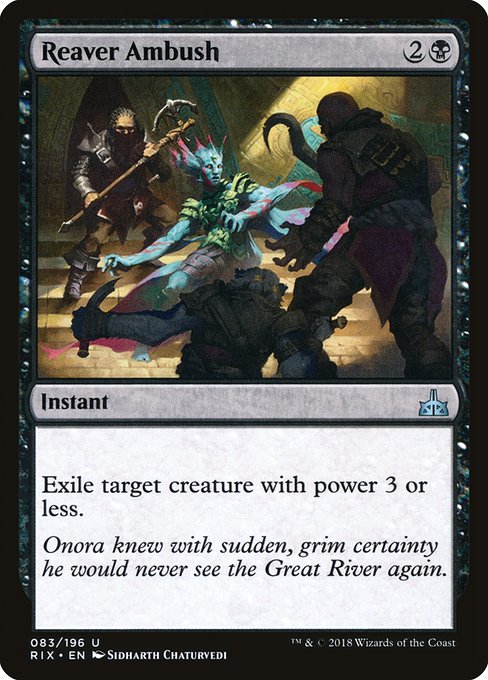
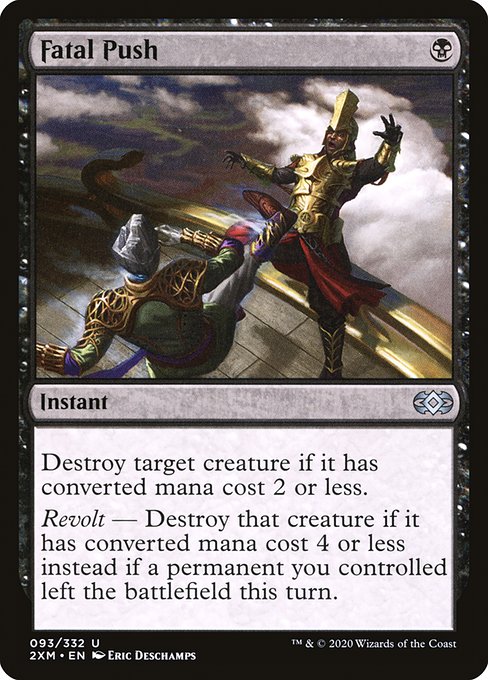
These spells are all great. They will keep you alive in the early game, and often trade up in mana in the late game where they can pick off an expensive flyer. Expect to pay two or three mana for them.
Destroy Target Creature
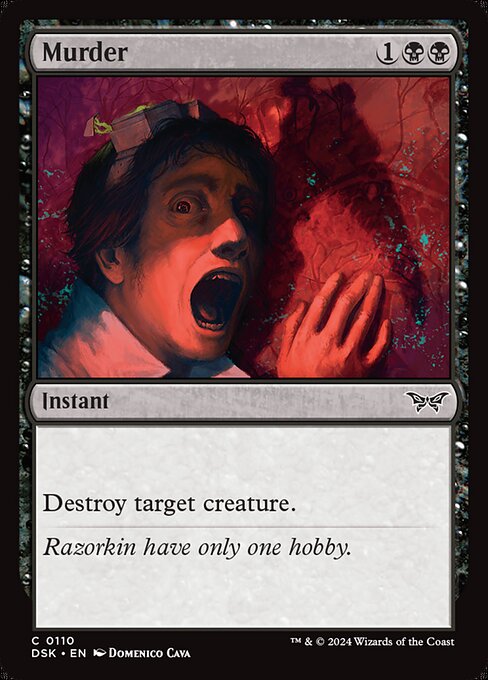

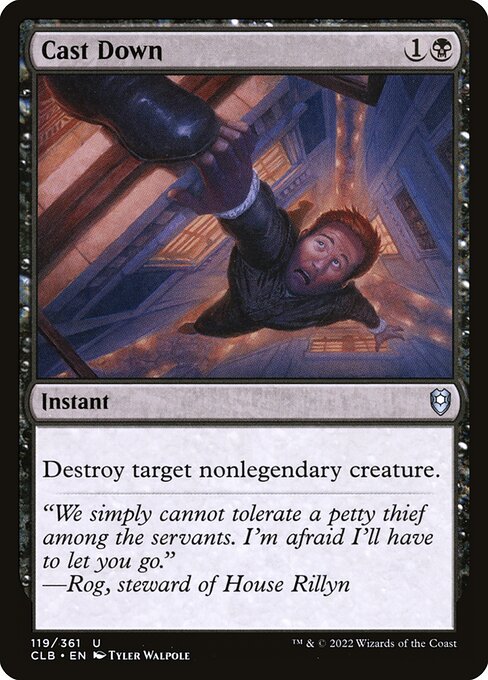
These are the best spells in black, and black is the best color for killing big creatures. All of these two or three mana, instant speed removal spells are easy first picks in a draft and there isn’t too much to say about it. Your deck needs removal and this is it. It gets a little more interesting with the expensive, sorcery speed removal spells at common.
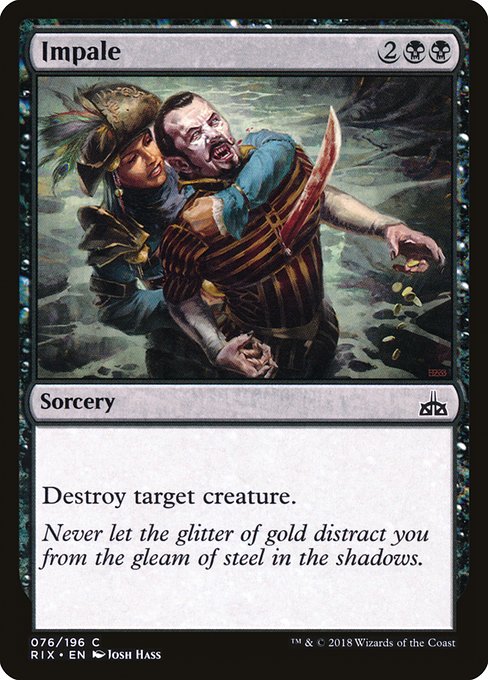
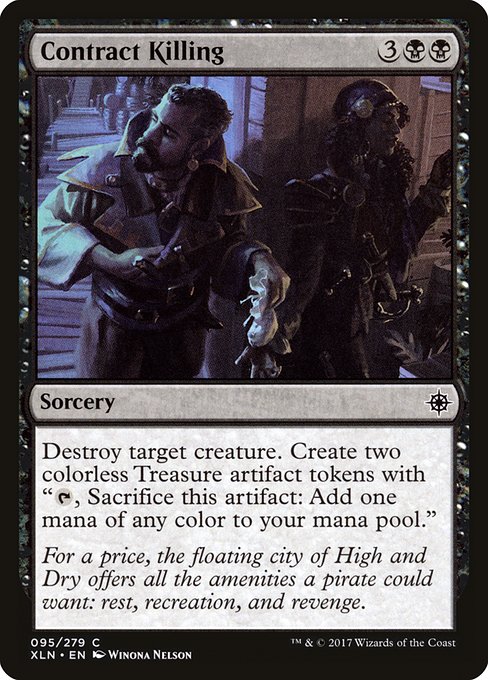
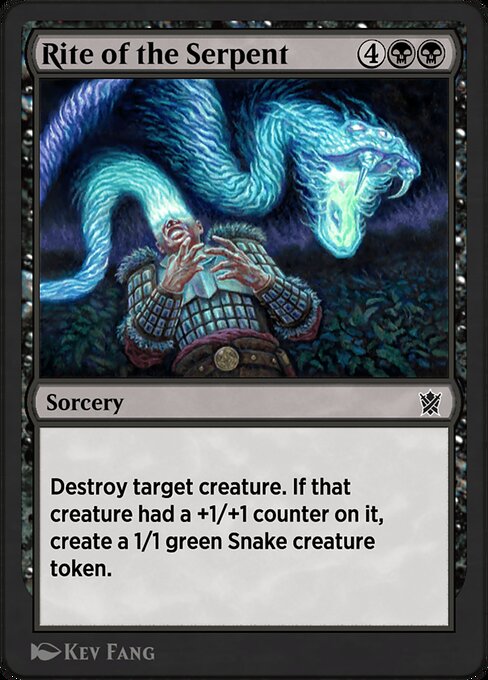
Four mana unconditional removal is always good and a high pick. You can play as many of those spells as you can find. Five mana removal spells are also very good. They usually give you some sort of kicker or extra value to them, to make the high mana cost a little more palatable, but at the end of the day they are removal for your opponent’s big creatures. Six mana kill spells are still playable if your deck is missing other types of removal, but these cards are below average and should be avoided if you have other ways to answer your opponent’s threats. It is almost impossible to get a mana advantage out of a six mana removal spell, and many games you will not survive to see your sixth land drop, so don’t pick these cards too highly.
Destroy Target Creature on Enter the Battlefield
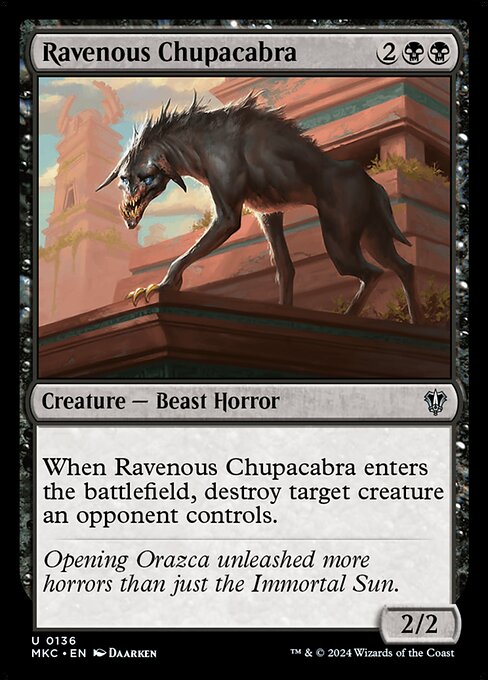
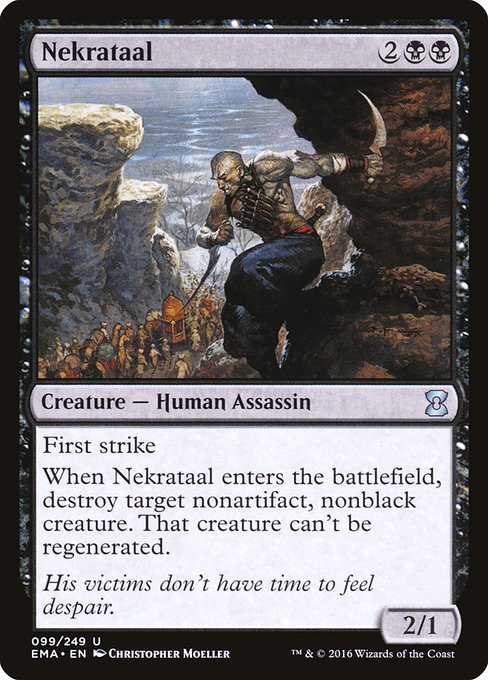
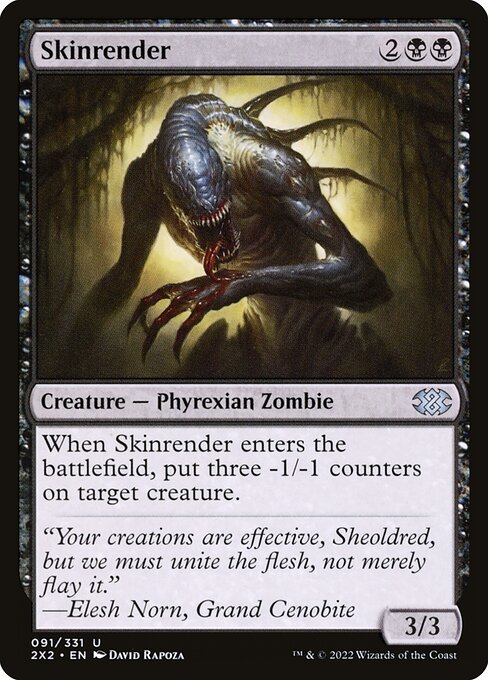
I just said that Impale was good, right? Well how about we give you a 2/2 for free on top of it? While it is conceivable that Wizards could design a creature like this that was bad, like an eight mana 1/1, these creatures are typically the best of the best, and even the ones that kill conditionally are windmill slam first picks. If it isn’t already clear why these creatures are so good, let’s list a few more reasons while we’re at it.
- You can find them in your library with spells that search for creatures in your top few cards (a common effect in green)
- You can return them from your graveyard with raise dead spells and recast them, or simply reanimate them directly
- You can bounce them back to your hand and recast them
- You can blink or flicker them to retrigger their enter the battlefield triggers (blink means spells or abilities that exile a creature and return it to the battlefield)
- You can clone them
- You can use the creature to actually attack or block
Edicts
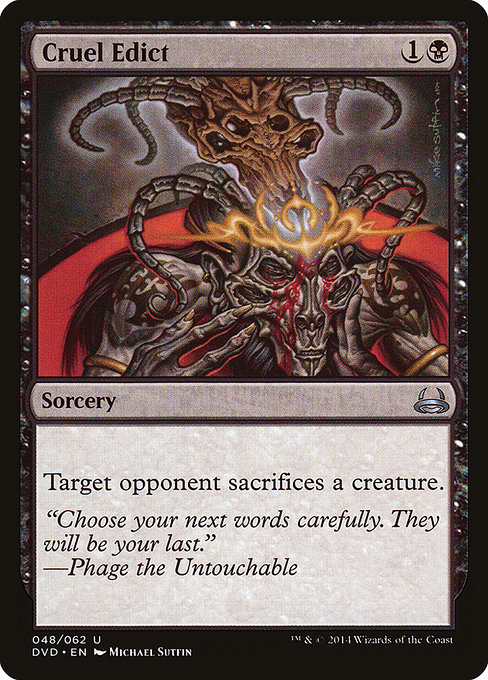
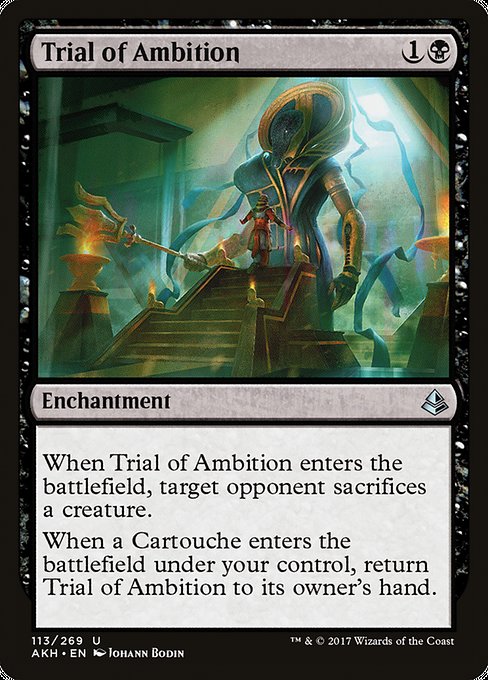
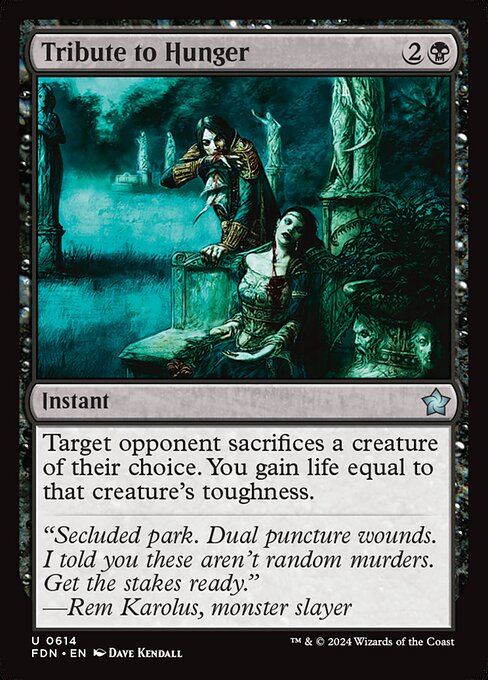
Edicts force your opponents to sacrifice a creature. In constructed they are typically used to remove hexproof or indestructible creatures. The problem with these spells in limited is that most limited decks are full of creatures and ways to make 1/1 or 2/2 creature tokens. Therefore these spells are reasonable at two mana because they will typically get a two drop from your opponent, but many versions are costed at three mana and should generally be avoided. You won’t typically get the best out of that exchange. They also play extremely poorly if you have any Aura based removal in your deck like Pacifism or Claustrophobia.
Multi Edicts
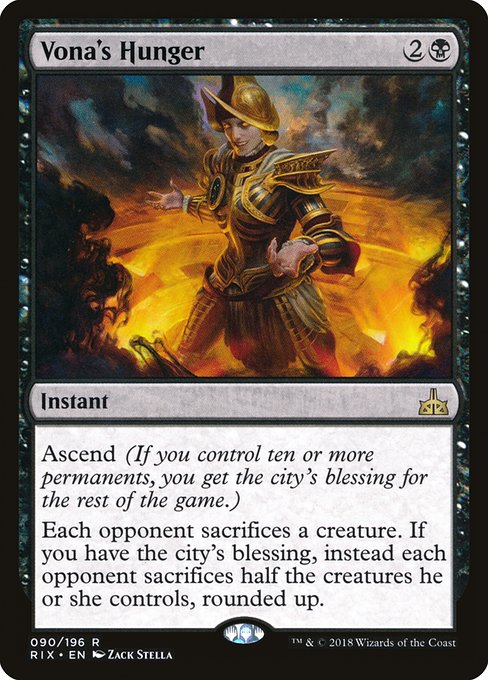
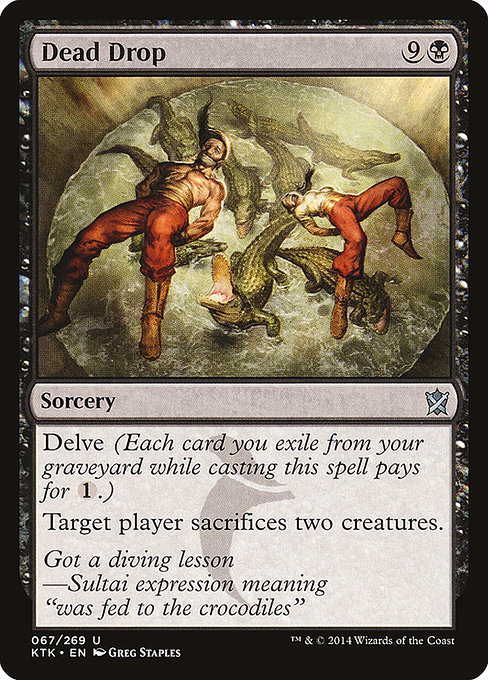
While I am not a big fan of traditional edicts because they will most often kill a two drop or token, the spells that make you sacrifice multiple creatures are much harder to play around. They can often create card advantage for you, and are good value even if they don’t get your first choice for targets. Don’t play Aura based removal early if you are running this in your deck, but feel free to draft this type of removal.
Red Removal
Damage Based Removal

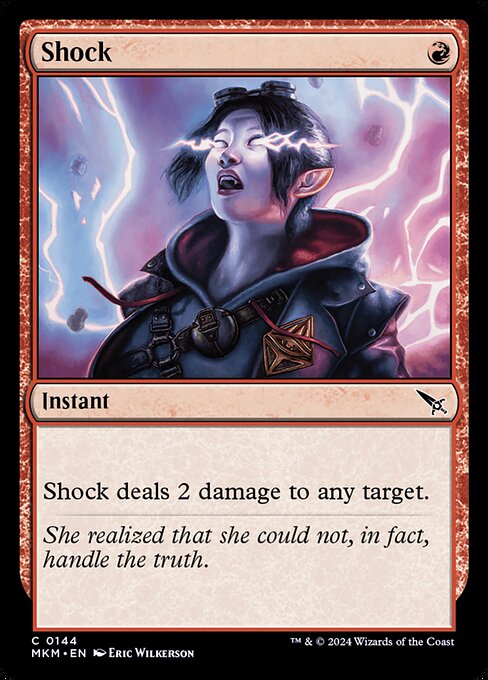
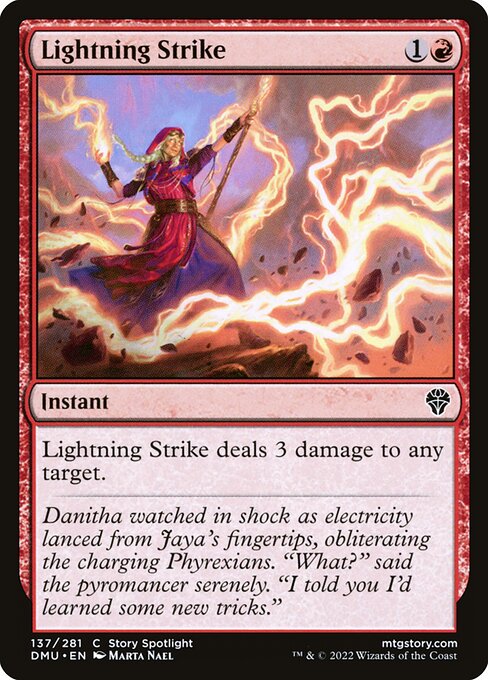
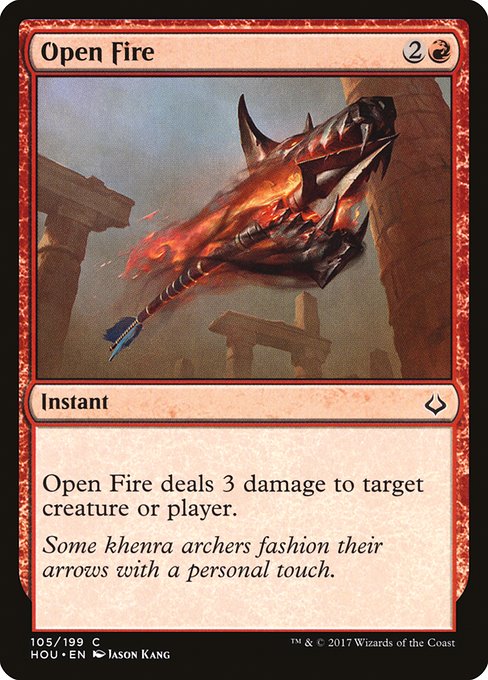
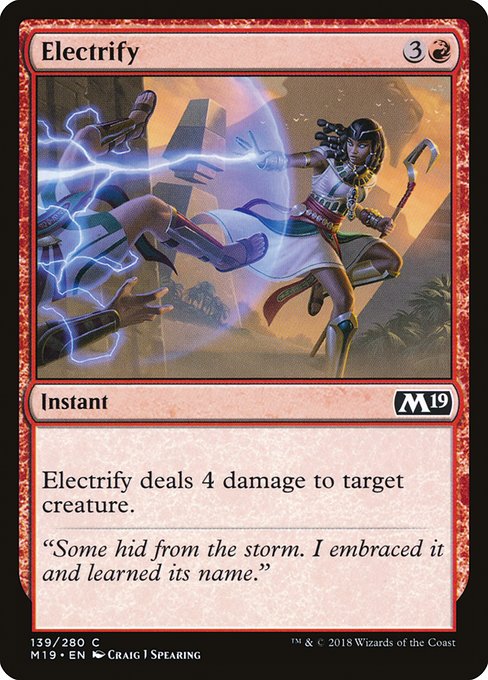
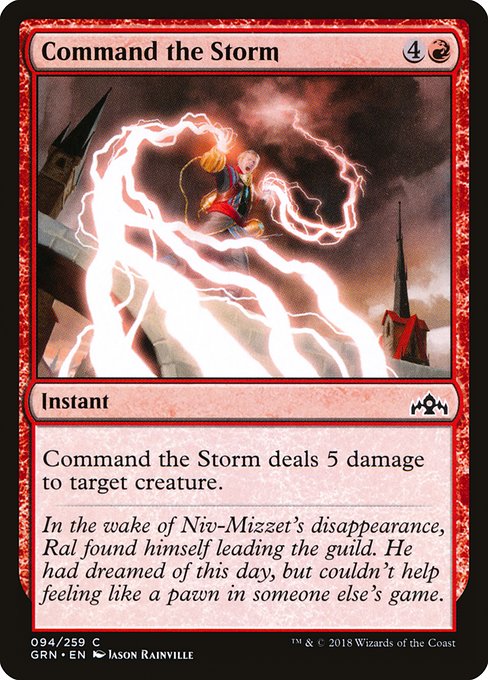
Red removal tends to be better the lower on the curve it is. If they ever reprint Lightning Bolt in standard, it will still be as good as it was in Alpha. Three damage can kill about half of the creatures that you are going to face in a game of limited, and for one mana it is unbeatable. More typically you are going to see Shock, Lightning Strike, and Electrify. These spells are the bread and butter of red removal. Lightning Strike is the best of the three, killing any two drop and most three or four drop creatures for two mana. One step down in efficiency are Shock and Electrify. In some formats Shock is better and in others Electrify is. Basically Shock ranges from excellent in very aggressive formats to playable in slower formats, where Electrify is just solid removal in any format. The value of Shock and Lightning Strike is not just in their efficiency (trading up in mana with the most of their targets) or their versatility (in dealing direct damage to your opponent to get them down to 0), but also in their cheap mana costs that will let you cast multiple spells in one of your early turns. The ability to “double spell” on turns three, four, or five can provide huge tempo swings and facilitate many extra points of damage before your opponent can recover.
The value of these spells goes down greatly as they increase in mana cost. Let’s compare Electrify with Command the Storm, for example. The exact value of these cards will depend on the playable creatures in the set, but let’s say in an average set that Electrify can kill 70% of the creatures you will face, and Command the Storm can kill 80% of the creatures you will face. You are only actually happy about having Command the Storm that 10% of the time and most of the time you would be better off with Electrify. The one mana difference in casting cost will mean that Command the Storm will only be available to cast after hitting your fifth land drop, which will be about two turns after your fourth land drop on average. That means that you might need to take one or two extra hits of damage from that creature before you can kill it. It is also very unlikely that you will be able to trade up in mana dealing five damage to a creature. The best you can hope for is getting a six mana flier with it.
Enter the Battlefield Triggers Dealing Damage
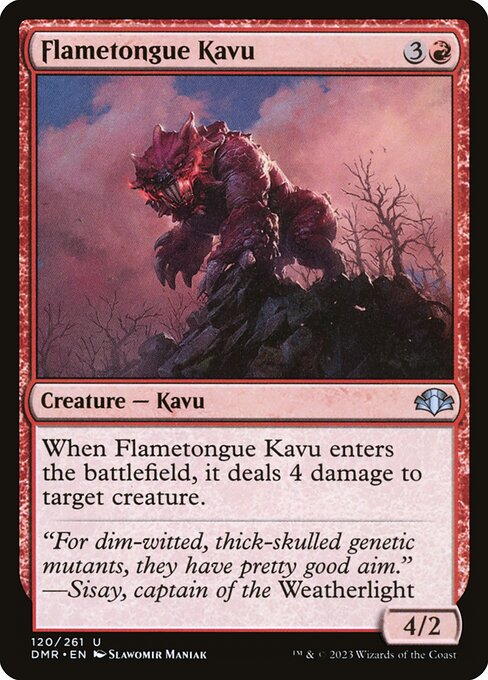
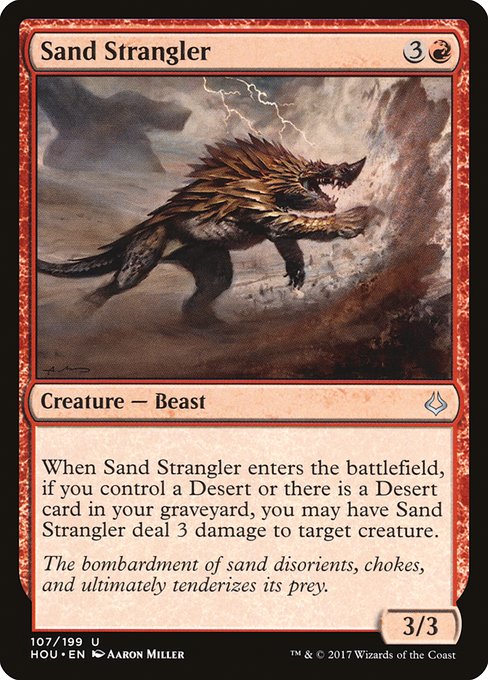
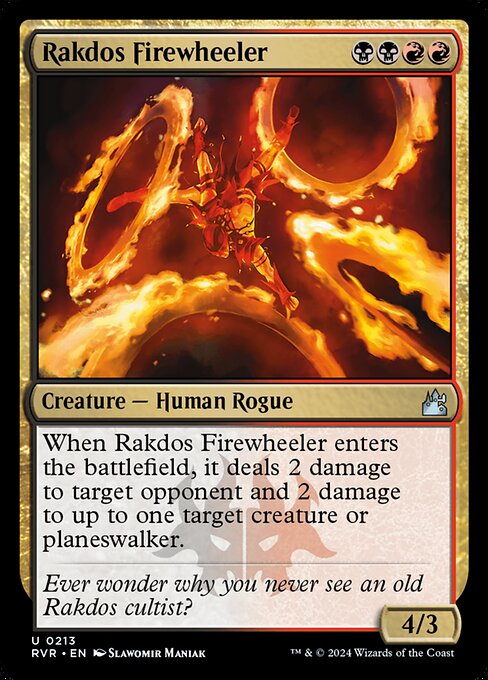
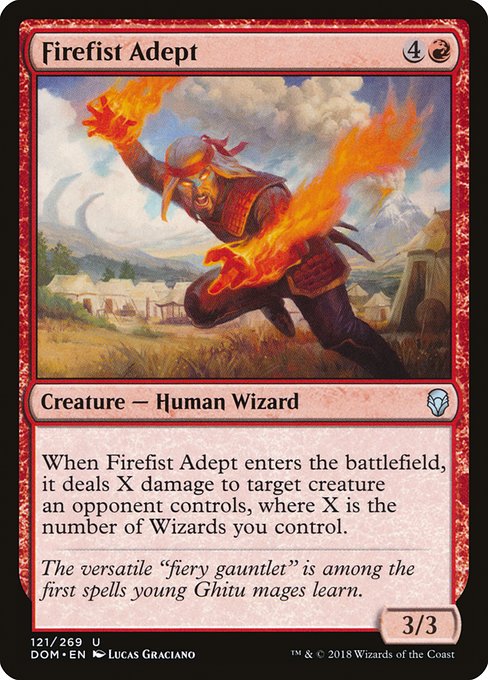
As long as the enter the battlefield trigger can deal at least two damage and the creature has decent stats for the mana cost, it will be easy to get a two-for-one out of the card. Creatures with one toughness are not very common in limited, so an enter the battlefield trigger than deals only one damage is considerably less valuable. Many of these cards have a considerable setup cost, such as Firefist Adept requiring a tribal them in your deck and Sand Strangler requires deserts in your deck. Since the stats on these creatures and setup costs vary wildly, it is difficult to grade them in a general sense. They have ranged from windmill slam first picks to below average filler.
Pingers
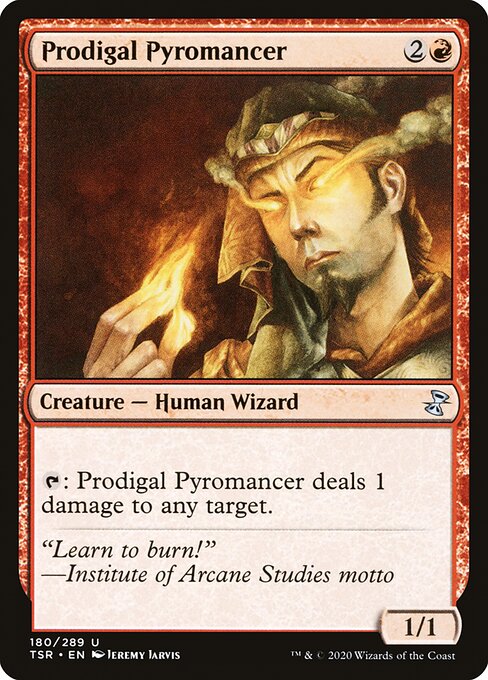
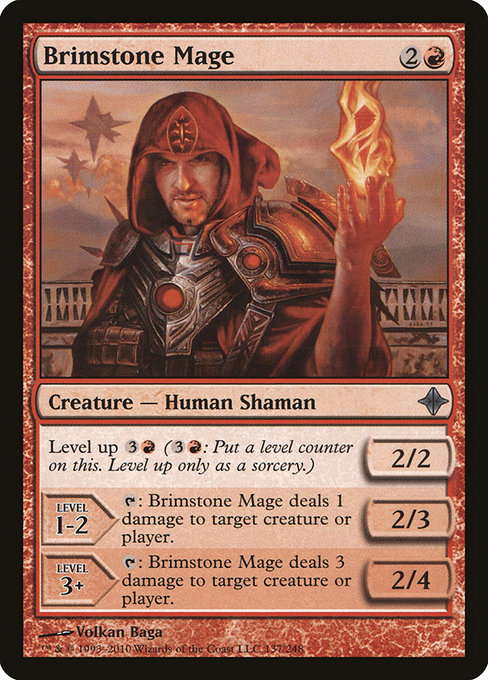
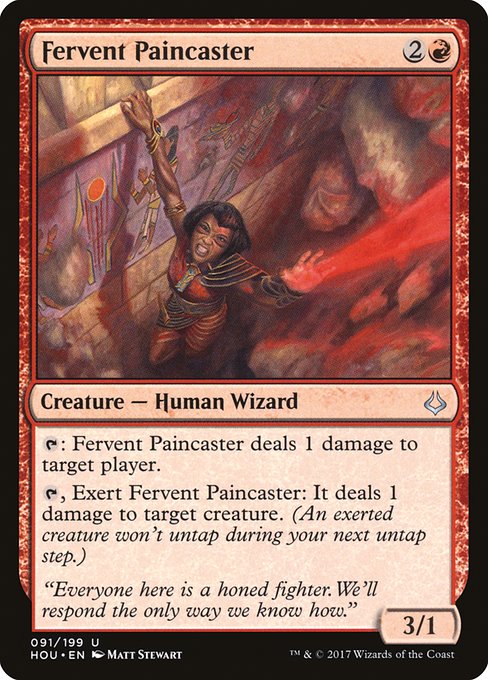
Pingers are creatures that can tap to deal a point of damage to a creature (or player). Repeated damage from creatures can machine-gun down 1/1 tokens and the stray x/1 creature, but pingers are even more useful than that. They are “on board” combat tricks that can let your 1/1s trade with their 2/2s and so on all the way up the curve. It’s just hard to get into any type of blocking situation when your opponent has a pinger on board, and often the threat of activation is enough to hold enemy attackers back. If you can use it to deal a direct point of damage to your opponent at the end of their turn, you will be getting extra value out of the stalemate. These creatures tend to be better than most common level removal spells and are more on par with premium, uncommon level removal like Lightning Strike or Murder.
Green Removal
Fight Spells
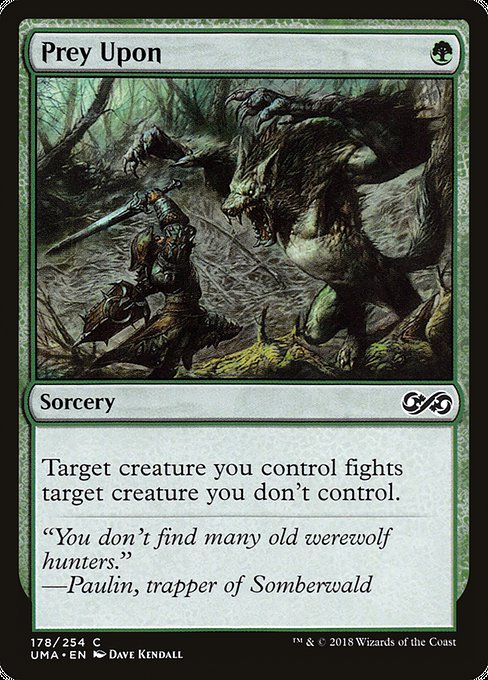
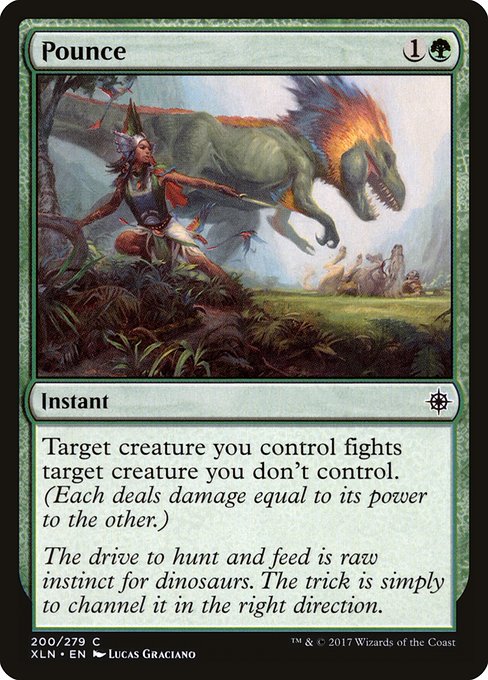
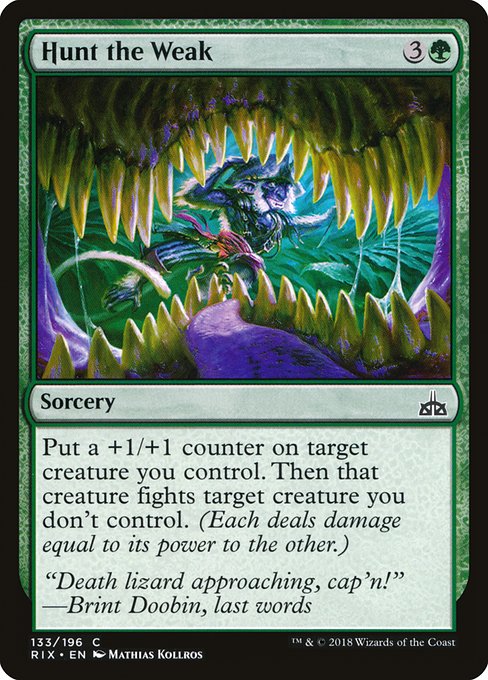
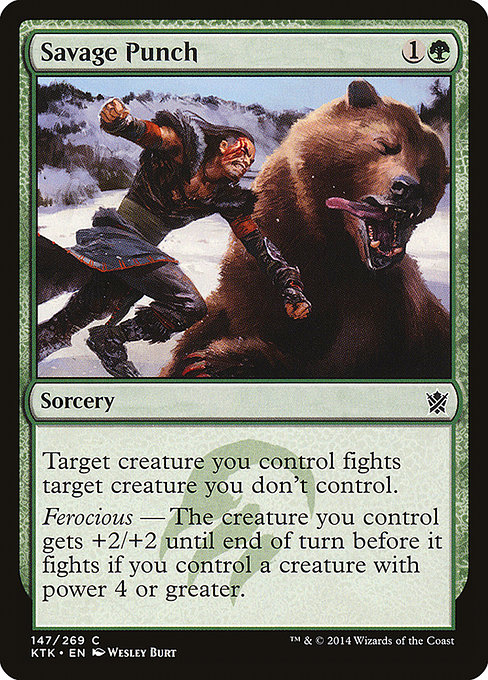
Fight spells are the most common form of green removal, where you target one of your creatures and one of theirs and they each do damage to each other simultaneously, as if one was blocking the other. If you are new to Magic, please note that they simply do damage to each other based on their power, so abilities like first strike and double strike do not apply. On the other hand, deathtouch does apply, because the creatures are the sources of damage, not the spell. The value of these spells vary widely from situation to situation. First of all, there is built in risk for all of these spells if your opponent has instant speed removal, bounce, or combat tricks. Having your fight spell interrupted by a doom blade or giant growth will kill your creature and nullify your removal spell with a single card. It is important to play around these situations if you draft these spells.
The other factor you need to evaluate before drafting these spells is what your creature curve looks like, or what are the stats of common creatures in this set. These spells are only effective if you have larger creatures than your opponent. If the creatures kill each other in the fight, then you have two-for-oned yourself by trading a creature and a removal spell for their single creature. Typically green has a variety of large creatures available at common that are good targets for fight spells, but that is not true in every set, and certainly not in every deck. The fight spells that boost your creature’s power and toughness are playable in many more situations and are much more desirable than the common Prey Upon.
Generally I find that Hunt the Weak is a solid playable in any set. Versions that are cheaper and boost power and toughness by +1/+1 or +2/+2 are always good, while the simple Prey Upon can range from good to unplayable depending on the creatures you have available.
Punch Spells (One-Sided Fights)
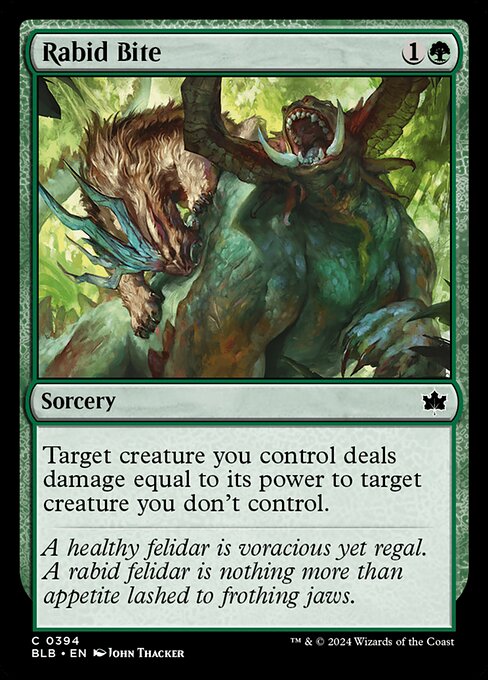
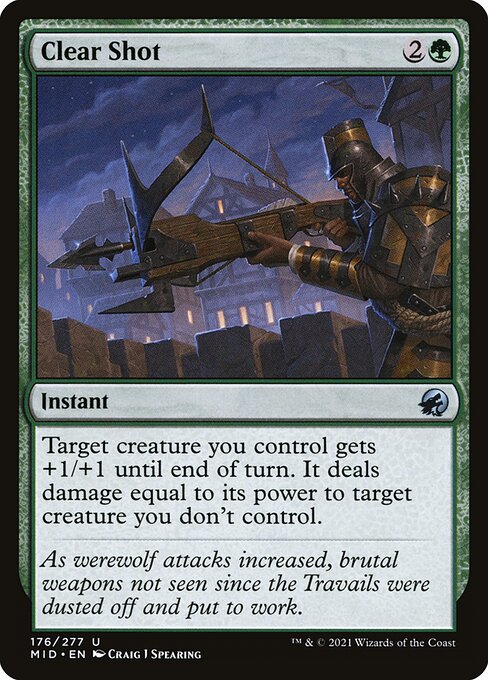
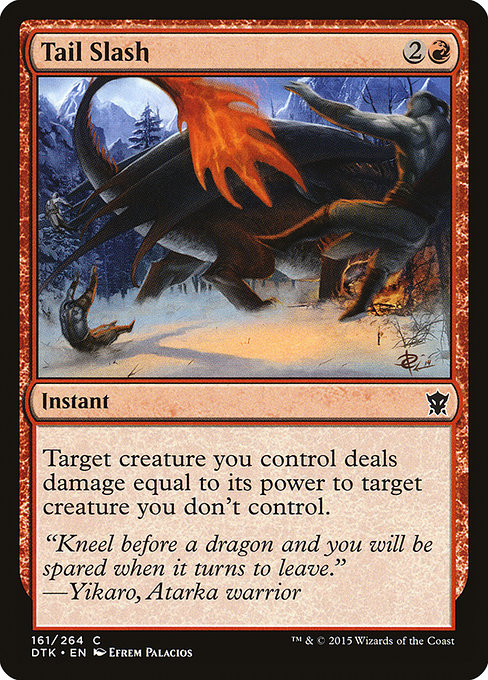
These spells are similar to fight spells except their creature doesn’t fight back, so they are strictly better in that sense. This effect used to be a red spell, but Magic R&D switched it to give green more options for creature removal (red already has plenty of burn spells, so it is a little redundant to have more restrictive versions). Again, look for versions that can boost your creature’s power for more utility. You can also prioritize deathtouch creatures if you have a couple of these spells in your deck. Otherwise most of the nuances that affect fight spells apply here.
Creatures that Fight on Entering the Battlefield

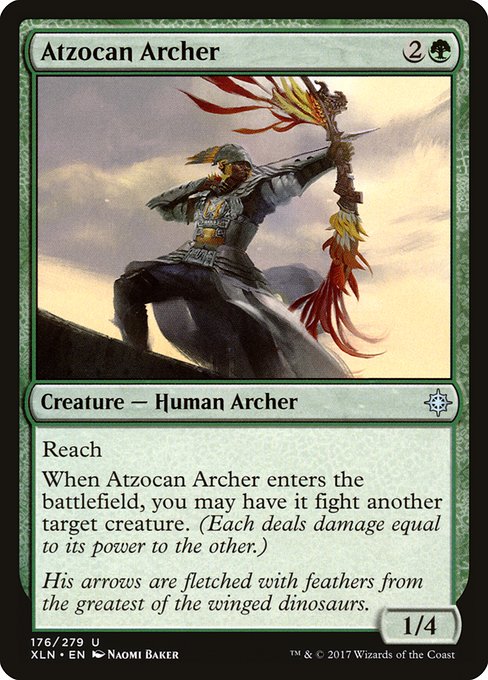
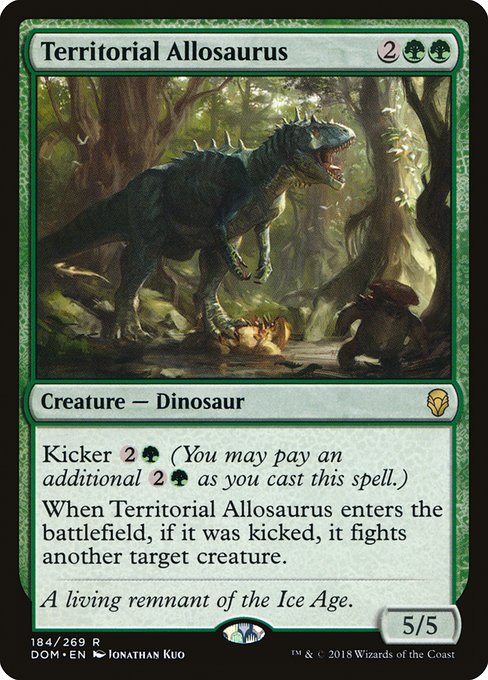
Most of these creatures are great and built in two-for-ones for your deck. Most of them are templated to say that you may have your creature fight another target creature when it enters the battlefield. That may clause is key. It lets you decide whether or not to fight when the ability resolves, not when you target the creature. That means that you can never be forced to fight the creature if they use a combat trick in response. This makes the fight trigger risk free and pure upside on your creature. Take special note of how the creature is templated whether you are playing it, or playing against it.
Plummets
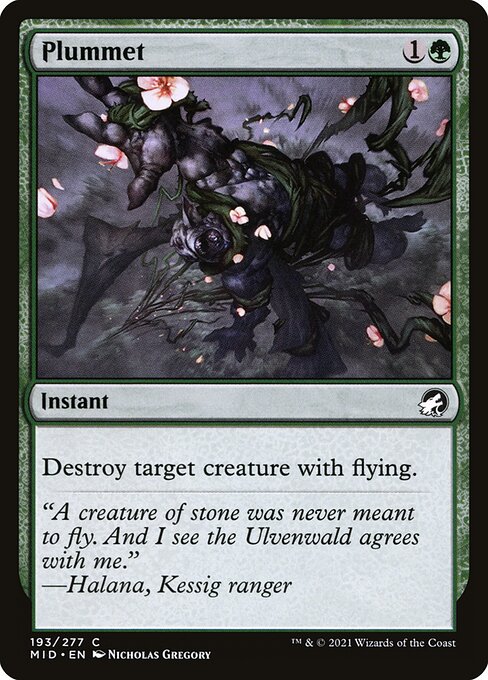
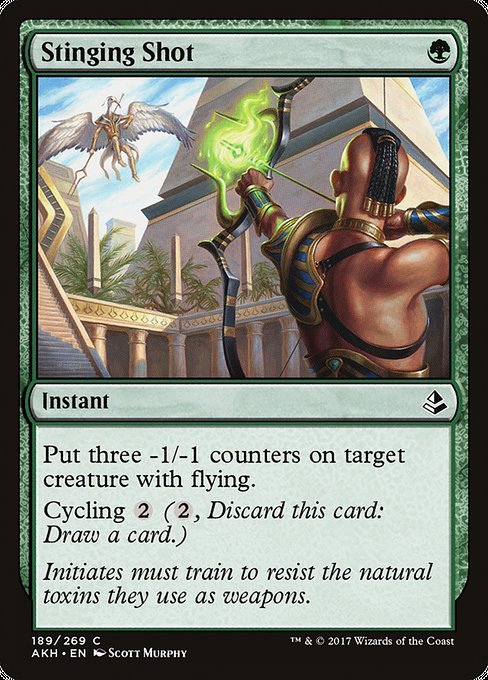
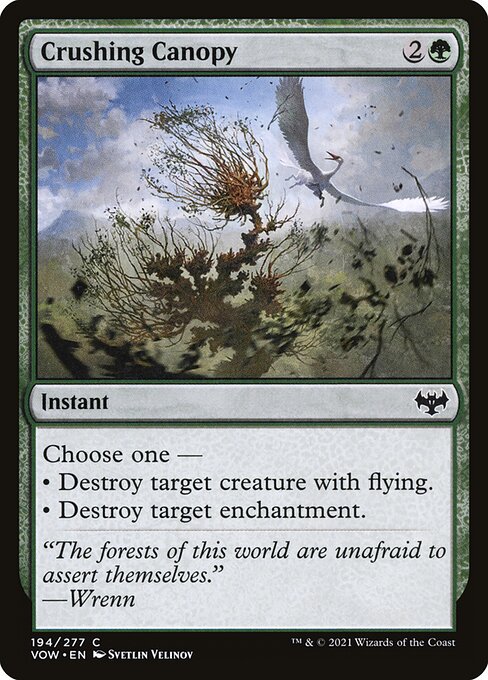
Most sets include a common green spell that can cheaply destroy or severely damage a creature with flying. At the very least they are powerful sideboard cards if your opponent has many fliers. I always take high-impact sideboard cards over mediocre creatures in the middle picks of a draft. Two out of three games are played post-sideboard, and when you bring Plummet in, it is often the best card in your deck. Since green decks tend to have large powerful ground creatures, they are often particularly vulnerable to fliers when the board stalls out. That makes the decision of main decking a plummet very interesting sometimes. I never do it if I have plenty of other removal, or a good number of flying or reach creatures, but I will play up to one Plummet if I feel particularly weak to fliers in my deck. It is easier to do this when the spell has other targets available, like Crushing Canopy, or can be cycled, like Stinging Shot.
Brown Removal (Artifact Based Removal)
Tappers
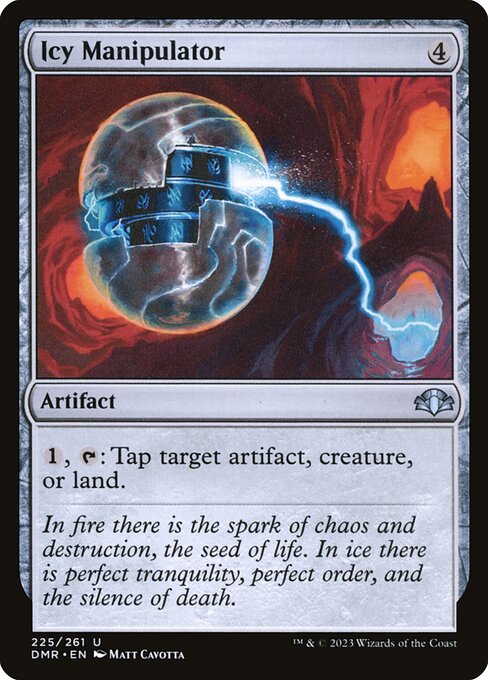
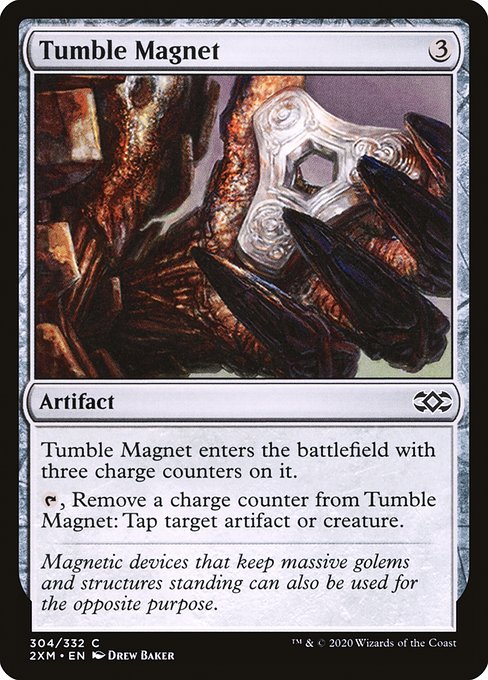
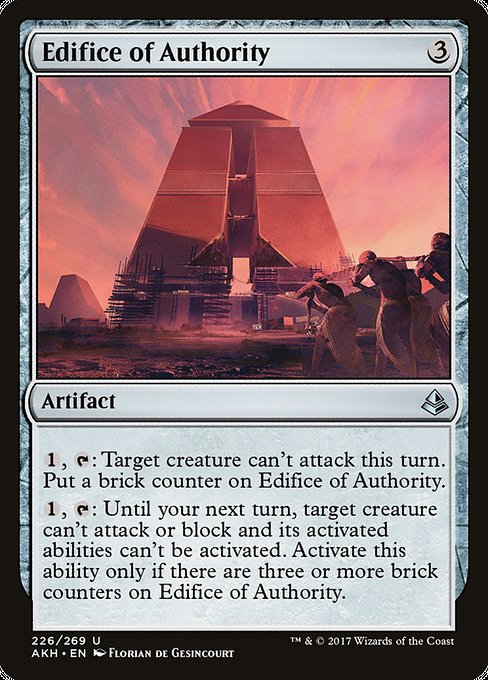
Artifacts that can tap or prevent your opponent’s creatures from attacking or blocking can be evaluated similarly to the white creatures with the same ability. If the activation cost is one mana or less, they will be very powerful cards. Artifacts that have limited charges, like Tumble Magnet, are much less useful as limited games tend to grind on, and it is neither a permanent answer to a threat, nor an efficiently costed tempo play in an aggressive deck. Starting your draft with a premium colorless removal spell, like Icy Manipulator, is great because it will go in any deck and will let you draft the two most open colors from your seat without being tempted to stay on color with your first pick.
Grenades
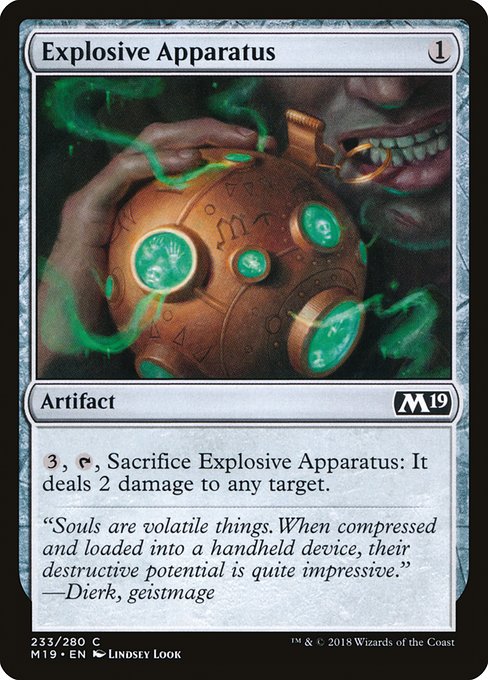
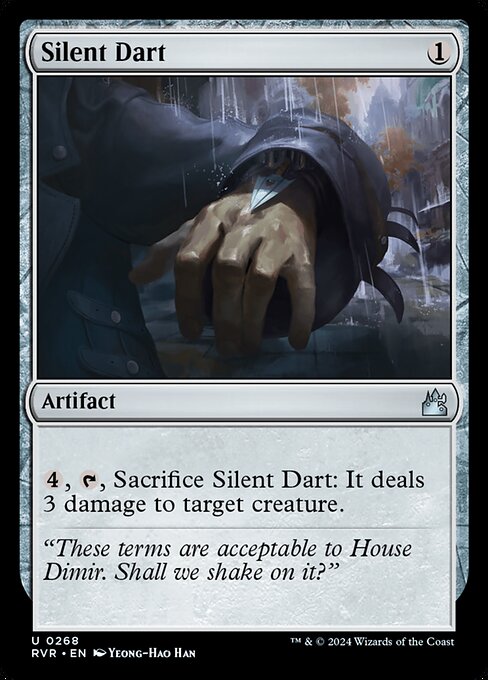
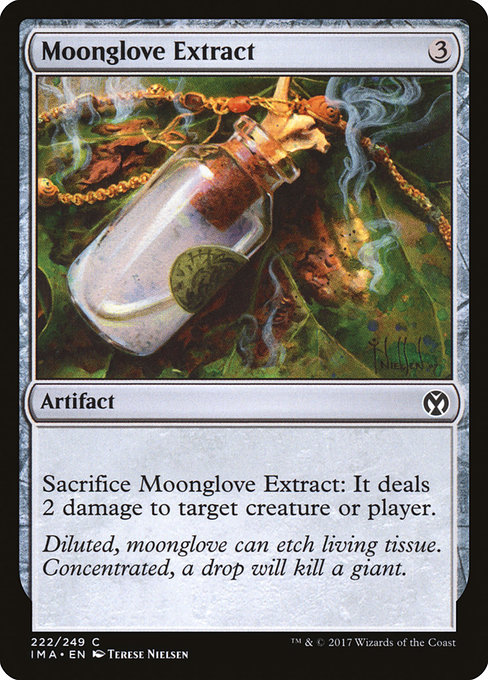
Many sets have a throw-in artifact that can remove a creature or deal direct damage. They are always over-costed and should be avoided unless your deck has other artifact synergies built in. Sometimes you might end up in a train-wreck draft and just need some sort of interaction in your deck, but playing these cards is a sign that something has gone wrong in your draft.
Conclusion
That is certainly a lot of information to digest, but that is what makes Magic an interesting game. If winning your matches was as simple as remembering B.R.E.A.D. then Magic would be about as popular as Tic-Tac-Toe or Go Fish. What makes Magic fun for me is understanding all of the card interactions and evaluating them first to an unknown “average opponent” and then reevaluating them after you have some information on their deck and have a chance to sideboard. Hopefully this overview has given you a solid foundation to make those evaluations for removal spells in any new set going forward. Let me know if you have any questions, or if I have left anything out. Thanks.

